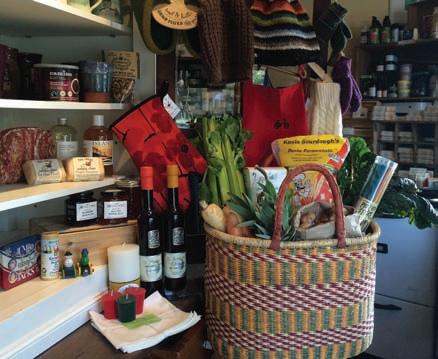




While it is true that Victoria is a small city, we punch above our weight when it comes to our food scene. It seems that there is an endless stream of would be entrepreneurs and innovators itching to get their concept or product in front of the public. Let’s take stock. In the past year, we’ve seen dozens of new restaurants, shops, and cafés open their doors. Take a trip down the aisles of any good grocery store; you’ll spot an ever-growing range of locally-made products—from small-batch dog biscuits made with the spent grains left over from the brewing process to an explosion in hand-crafted ice creams, kombucha, and kimchi. Our farmers are a resilient lot and fill markets with some of the highest quality produce in the country. In this issue we delve into the world of food delivery start-ups and catch a trend that updates favourite childhood foods. Joseph Blake visits the Vic West condo of a physicist and amateur gourmet cook who loves to entertain and Shelora Sheldan explores Portuguese cooking in our city. Not enough to write about? No, there’s plenty of food stories out there just waiting to be told. We’re on it!
TOFINO
UCLELET

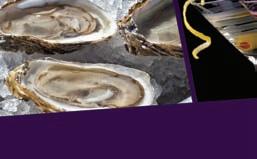












VANCOUVER
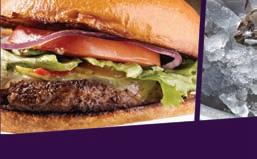

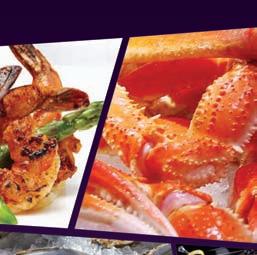
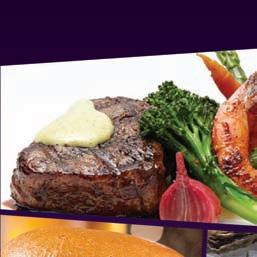

Just in time for the cooler season, Soupa Café has opened two locations in town; 736 View St (St. Andrews Sq.) and 450 Beta St. Both serve six different soups daily, as well as sandwiches, pastries and coffee. FACEBOOK.COM/SOUPACAFE
Farm and Field Butchers opened in early December at 1003 Blanshard St, selling meat and poultry sourced from local and ethical farms. This new downtown butcher shop is owned and run by Rebecca Teskey, who was previously part owner of the Village Butcher in Oak Bay. FARMANDFIELDBUTCHERS.COM
Red Barn Market is getting closer to opening their Esquimalt location in early 2017. They also have plans to open in the Capital Park development in James Bay for 2018. These will be the sixth and seventh locations for the Island-owned chain.
REDBARNMARKET.CA
It has been almost a year since the Market Square fire that closed Café Mexico, but the restaurant has now reopened, bringing back some favourites but with a new twist as well. Long time owners Brad and Hilda Olberg brought in chef Rigo Salas, formerly of the Four Seasons in LA, to elevate the menu, and also hired Shawn Soole (formerly of Little Jumbo) to put together a bar program that would put Café Mexico on the map for agave spirits and cocktails. CAFEMEXICO.COM
Another local favourite, Spinnakers Brewpub, is now also recovering from a fire. From their website: “On the afternoon of Wednesday November 23rd, during a busy lunch hour, Spinnakers Brewpub suffered a fire in the upstairs taproom. Staff was calm and assertive as they escorted patrons from the building and thankfully, no one was harmed. Victoria fire fighters and police arrived on scene quickly and acted fast to contain the flames.” The good news is the brewery is up and running again and restorative measures to the building and restaurant are now underway. As of early December, the downstairs bar had reopened with a paired-down menu. Follow Spinnakers on facebook or twitter for updates on their progress. SPINNAKERS.COM
A new walking food tour of downtown Victoria is the new venture of local Andy Olson. The two-hour Taste of Victoria Food Tour begins at the Victoria Public Market and includes stops at Fan Tan Alley, Market Square, Bastion Square, Trounce Alley, and more. Tastings include
bread, cheese, olive oil, tapas, seafood, tea, and chocolate among others. $49.95.
ATASTEOFVICTORIAFOODTOURS.COM
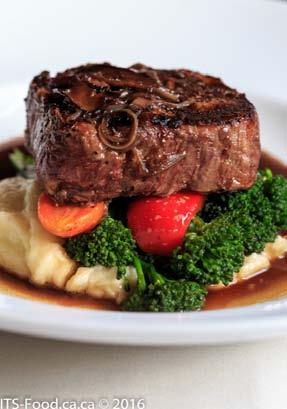
Saaz Restaurant has closed at 535 Yates St and a new sign is up for an Asian food restaurant, Chi Pan. No news on an opening date at press time.
Keeping a healthy diet through winter can be a challenge, but not if you have taken the Winter Salads and Braised Meats class at Cook Culture. The focus is on great winter salads and dressings that can be made in batches ahead of time as well as simple and delicious slow cooked meats which can be made the day before or on the weekend. Offered Jan 13 or Feb 9 from 6-9pm. $90. COOKCULTURE.COM
Seedy Saturday will be taking place in Saanich on Jan 14, 10am-2pm, presented by Haliburton Farm at the Horticulture Centre of the Pacific and featuring quality vendors, seeds, plants, starts, local wineries, seed exchange and a children’s table. Nourishment will be provided by Charlotte and the Quail. SEEDS.CA
The Hotel Grand Pacific is hosting the popular four-day Victoria Whisky Festival Events include master classes and tastings such as the Scotch Guy’s Magical Mystery Tour featuring eight unique whiskies, and the Glenmorangie Distillery Master class with Ruaraidh MacIntyre Jan. 19-22
VICTORIAWHISKYFESTIVAL.COM
Not directly food related, but of interest to small office/ home office business owners and employees who make key business decisions for them, SOHO Victoria is hosting a full day summit on Jan 27 at the Victoria Conference Centre. "SOHO Victoria is about helping small and home office business owners be successful by empowering them to efficiently manage and grow their business.” SOHOVICTORIA.COM
Tourism Victoria and the BC Restaurant and Food Services Association’s 12th Annual Dine Around and Stay in Town will take place from Feb 17-Mar 5 Participating restaurants will offer threecourse menus for $20, $30, $40 CND per person and are all paired with BC VQA wine suggestions. This year select restaurants will once again offer celiac-friendly menus. TOURISMVICTORIA.COM/DINE
Victoria’s Seedy Saturday will be held Feb 18, 10am - 4pm and is hosted by the James Bay Market Society at the Victoria Conference Centre. The event will feature local seeds, plants, products, and speakers.
JAMESBAYMARKET.COM/SEEDYSATURDAY
Looking ahead to March, the sixth annual Culinaire event will be held at the Crystal Garden on March 23 this year. This event provides locals with the opportunity to savour signature menu items and inspired dishes from an abundant selection of restaurants, lounges, pubs, cafes, specialty purveyors, and sip from a fine selection of local and regional wine, cider, and craft beer. Partial proceeds provide scholarship awards to the Camosun College Culinary Arts Program and a donation is made each year to the BC Hospitality Foundation CULINAIREVICTORIA.COM





FOUNDER & EDITOR
Gary Hynes
PUBLISHER
Pacific Island Gourmet
CONTRIBUTING EDITOR
Carolyn Bateman
VANCOUVER CONTRIBUTING EDITOR
Julie Pegg
SENIOR WINE WRITER
Larry Arnold
PRODUCTION
Gary Hynes
DESIGN CONSULTANT

Aleya Samji
COPYEDITOR
Cynthia Annett
REGIONAL REPORTERS
Tofino Ucluelet, Jen Dart
Victoria, Rebecca Baugniet
Cowichan Valley-Up Island, Kirsten Tyler
CONTRIBUTORS
Larry Arnold
Joseph Blake
Michelle Bouffard
Holly Brooke
Isabelle Bulota
Adam Cantor
Cinda Chavich
Jennifer Danter
Pam Durkin
David McMillan
Elizabeth Monk
Michaela Morris
Daisy Orser
Elizabeth Nyland
Adrian Paradis
André Rozon
Adrien Sala
Shelora Sheldan
Jill Van Gyn
Rebecca Wellman
COVER


Isabelle Bulota (styling) & André Rozon (photo)
ADVERTISING DIRECTOR
Gary Hynes
SENIOR ACCOUNT MANAGER
Susan Worrall
DIRECTOR OF BUSINESS
DEVELOPMENT
Jen Kinna
FACEBOOK/EATMAGAZINE
TWITTER/EATMAGAZINE INSTAGRAM/EATMAG
For
“
CHICAGO
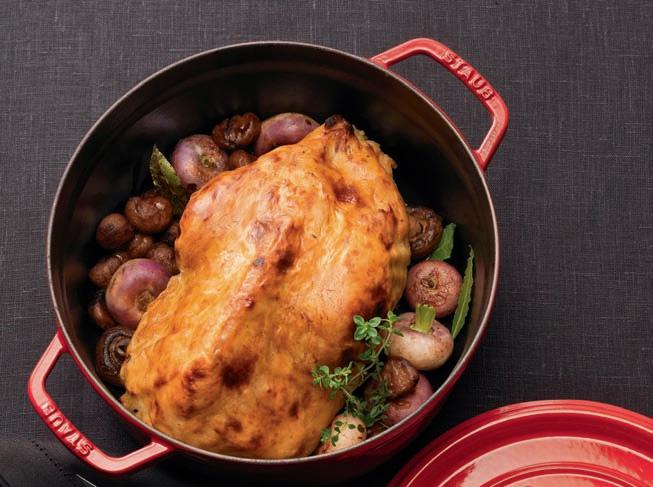



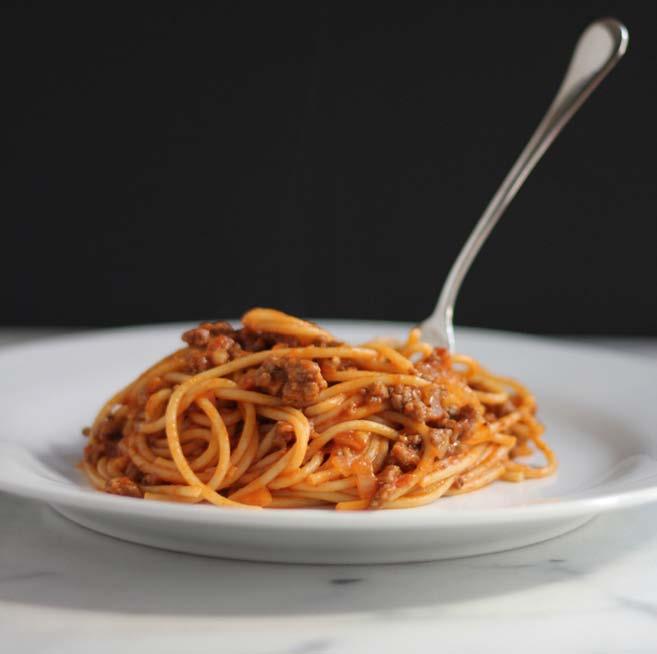
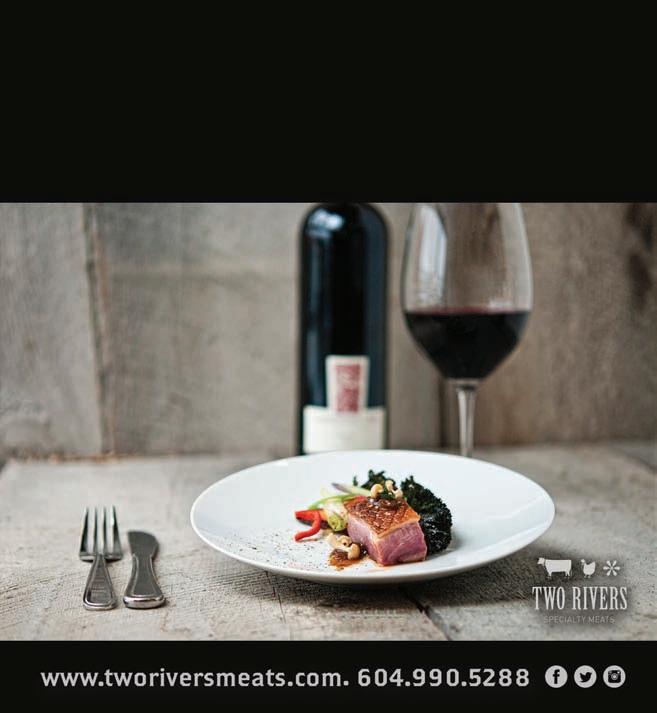

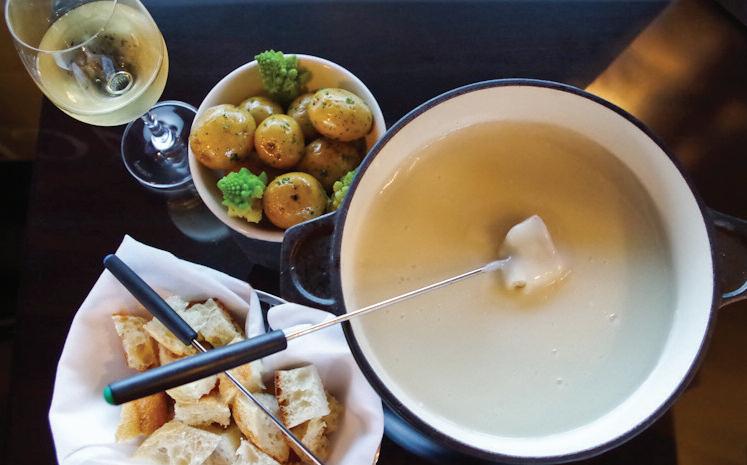

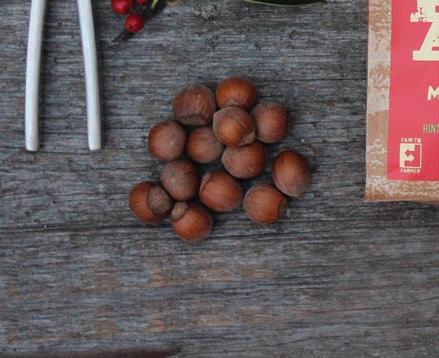
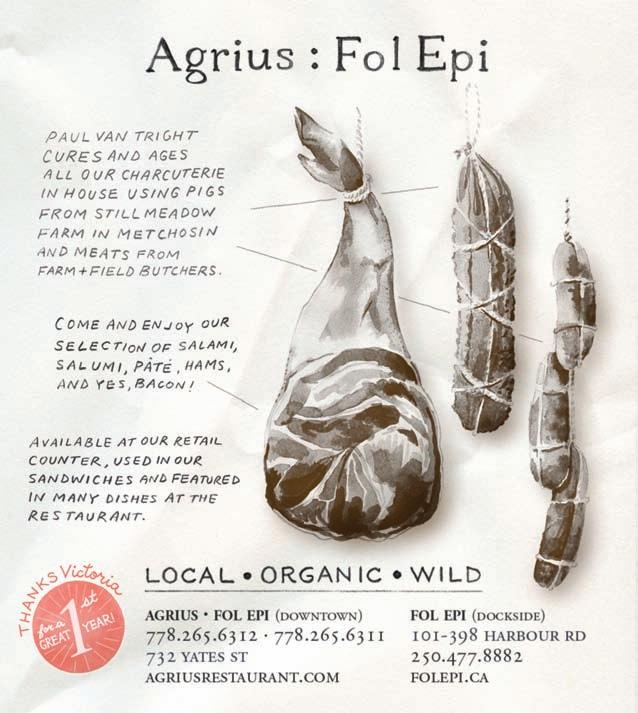


EDMUND TIJERINA, FOOD AND DINING writer at the San Antonio Express News, steers me through an unassuming San Antonio neighbourhood toward El Milagrito, a down-to- earth Tex-Mex café packed with suited-and-booted types and blue collared alike. Squeeze bottles of mild-ish red and searing hot green sauces are on every table.
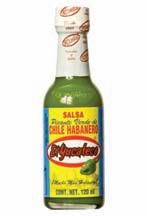
Over-easy fried, but not greasy, eggs, served alongside slivers of earthy tender nopal (cactus) and tomatillo salsa jump with tangy flavour. I scoop up El Milagrito’s barbacoa with a bit of torn homemade tortilla. “In Mexico, you might just get overcooked shredded beef in a tortilla,” Tijerina says. “But here, beef is moist and the flavours more intricate.” I guess so. This barbacoa is so rich, juicy and tender that it collapses with a touch of a fork. I scatter the meat with diced red onion and a squeeze of lime. No need for added sauce.
For those like me whose knowledge of the true fusion of Texan and Mexican culture is pretty lean, Tex-Mex food likely means Taco Bell or Old El Paso tacos smothered in shredded processed cheese. Possibly fish tacos and fajitas figure in there too. Three days of noshing my way around San Antonio, the epi-centre of Tex-Mex cuisine, soon empties my head of such erroneous thinking. Great Tex-Mex cooking lies in co-mingling the Texans’ penchant for cooking or smoking over an open fire and the Mexicans’ fondness for char and chili. Done well, layer upon layer of rich, subtle (or not so subtle) smoky heat results in a marvellous depth of flavour.
At the 75-year-old Mi Tierra café and bakery, puffy flour and biscuit-like corn tortillas and tidbits of fiery, fire-roasted jalapeño drive slow-roasted goat, orangeand spice-flecked pork and tender beef tongue from plate to mouth. And at trendy Cured in the town’s hip new Pearl District, a taste of New Orleans sneaks into a spicy smoked pork shoulder gumbo. This slowcooked, smoke and fire combo offers a depth of flavour that is entirely new to me. And it’s about to become a game-changer in my culinary repertoire.
A further eye-opener into the blessed union of fire and smoke is lunch at NAO Latin Gastro Bar at the CIA (Culinary Institute of America) San Antonio campus. Due to San Antonio’s robust Mexican culture, the school has a strong Latin culinary program (which also looks to Chile, Peru and Argentina for inspiration). Students (many are Latino and ex-military, who are up to taking the “heat” of a teaching kitchen) man the stove and wait tables during lunch. The menu takes on

a modern twist. Here the fire-and-smoke element hits with more snap. Smoked lemon vinaigrette is perfect for grilled octopus, baby arugula and mini-purple potatoes. Shrimp esquite, a take on a Mexican street snack based on charred corn, is mixed with mayonnaise, lime juice, pequin chilies and cilantro. It’s absolutely delicious (and easy to concoct). As I nurse “Latin Mary” (Sokol tequila and tomato juice also zapped with smoked sea salt, habanero and cilantro), I observe a bulky fellow deftly blistering chilies over an open flame, and tomatoes being char-roasted in a cast iron pan for a salsa that bursts with sweet fire and crunchy smoke. Chef-instructor Justin Ward tells me that depending on the ingredients, several sources are used to glean various smoky tones—wood-fired oven, open flame, cast iron pan or a makeshift stovetop smoker. Once back in Vancouver I decide these are all ways to which I can easily adapt. Until a chef in my town taps their inner vaquero (and rest assured one will), it’s time for me to bring on some heat and smoke. I’ve just given barbacoa a whirl by searing brisket on the grill, then slow braising on very low heat for three hours with toasted smoked chilies and roasted tomatoes. It’s almost up there with El Milagrito’s.
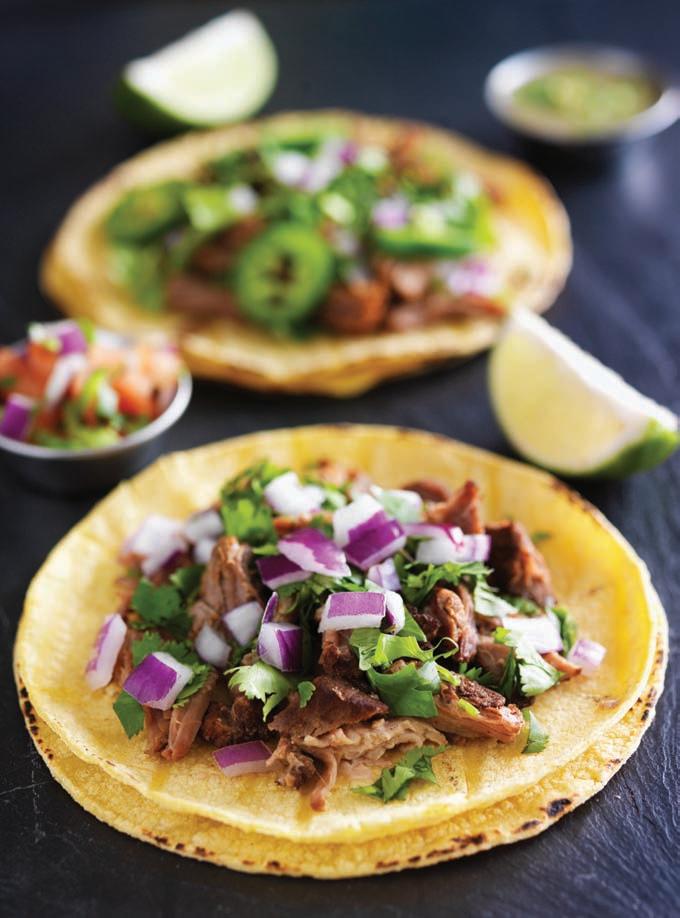





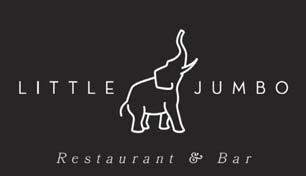
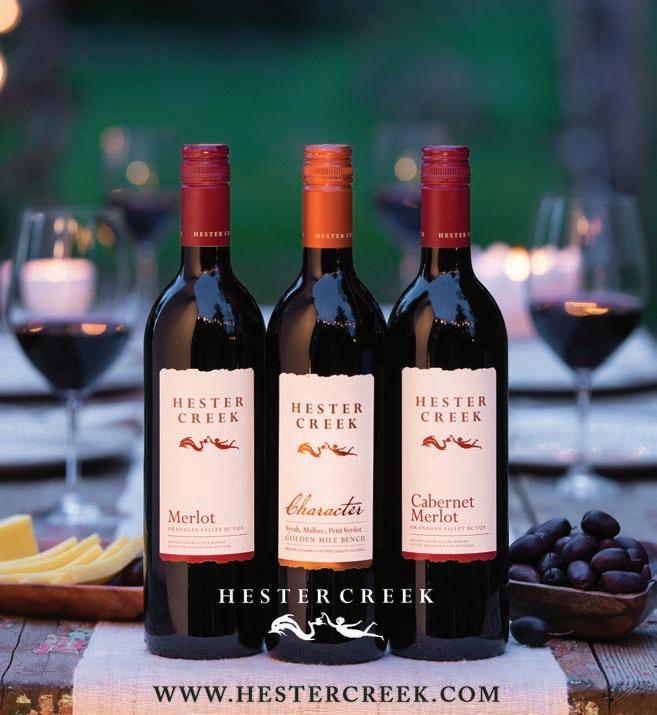
“Great







Year-round microgreens make any meal healthier.
in North Saanich, where you are literally surrounded in new life, will give you hope in this season when everything seems to take a little more effort. Hope that you can achieve all those “New Year, New You” resolutions for being a better person. We all have one of these lists; we just don’t all admit it. And many of our lists are topped with “eat better/fresher/greener.”
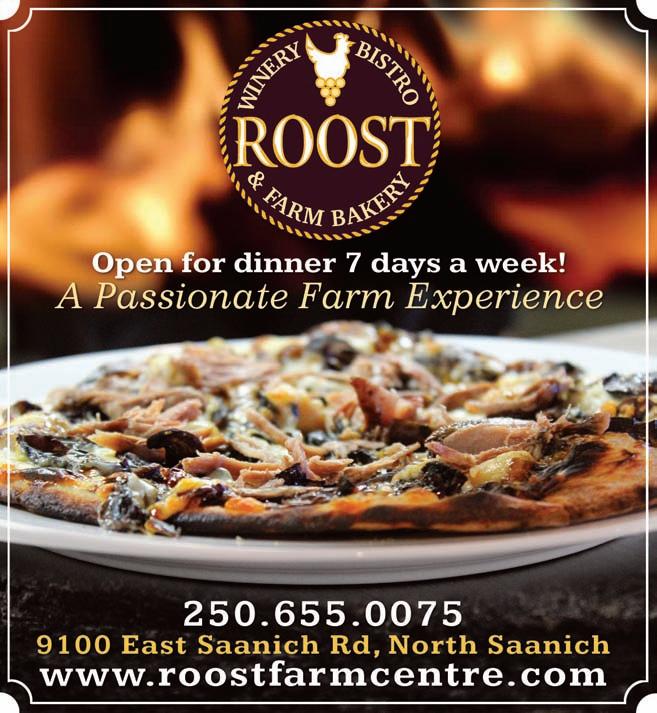
Enter the microgreen. These little lovelies are the champions of any fresh/local/green master strategy. Tim Gilpin at Specialty Microgreens has been at this for years. He harvests every two weeks year round, at the appearance of the first “true leaves,” to capitalize on maximum nutrient density. New seeds are always soaking and fresh cuts are being dropped at local markets to fuel your new commitment to goodness.
Microgreens aren’t the new kid on the block some think they are. They’ve been on the scene since the ’70s but are currently taking centre stage as their

extreme nutrient density of up to 40 times that of their full-leaf counterpart speaks to our constant quest for increased efficiency, even in our food. These little leaves deliver: with more than 15 varieties seeded throughout the year—from pac choi and radish to purple mustard, kohlrabi, arugula, peas and all of the brassicas—you’re not only getting concentrated nutrients, the flavour delivery is exceptional. Every salad, sandwich, soup or rice bowl topped with microgreens is instantly healthier, and immensely tastier. How often is the more nutritious option also the more delicious one? Put these little green gems on your grocery list; or get a New Year’s resolution gold star for growing your own.
(westcoastseeds.com/how-to-grow-guides/grow-microgreens)








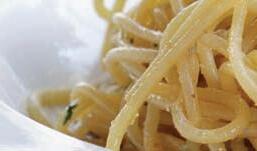

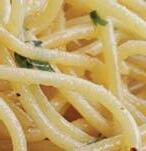
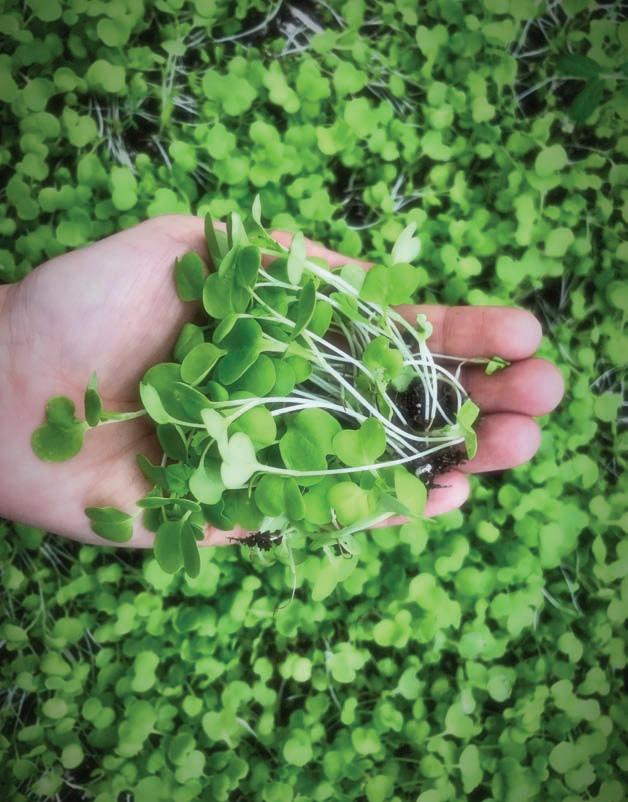
When Shakespeare said ‘Though she be but little, she is fierce,’ I’m certain he was eating avocado toast topped with a nice big handful of local micro greens.
 by Shelora Sheldan
by Shelora Sheldan
WITH THE FAMILIAR AND BOISTEROUS dishes of italy and Greece, and the trending tapas of Spain, the cuisine of Portugal is easily overlooked. But beyond the iconic Portuguese bun, a sandwich ingredients’ best friend, a world of exciting flavours and ingredients awaits discovery. Think sardines, bacalhau or salt cod, chouriço, artisanal cheeses, the chili pepper piri piri, roasted red peppers, paprika, olive oil, garlic and bay leaves—these are a few of Portugal’s favourite things. And all are readily available to help you add another notch to your culinary repertoire.
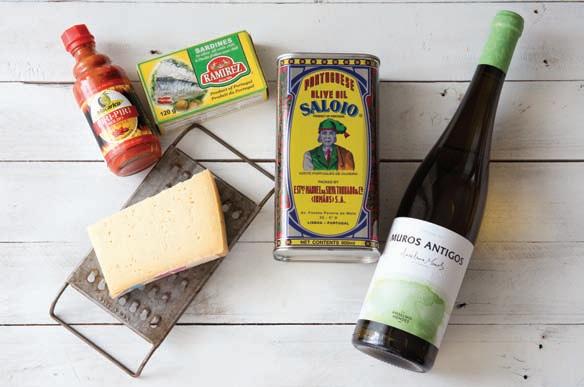
Through immigration and colonization, this largely sea-faring nation has settled throughout the globe, influencing and adapting their foods while still celebrating its uniqueness. They have kept their culture alive through the powerful connection of food. Through community centres, delis, bakeries and restaurants, their cuisine has endured.


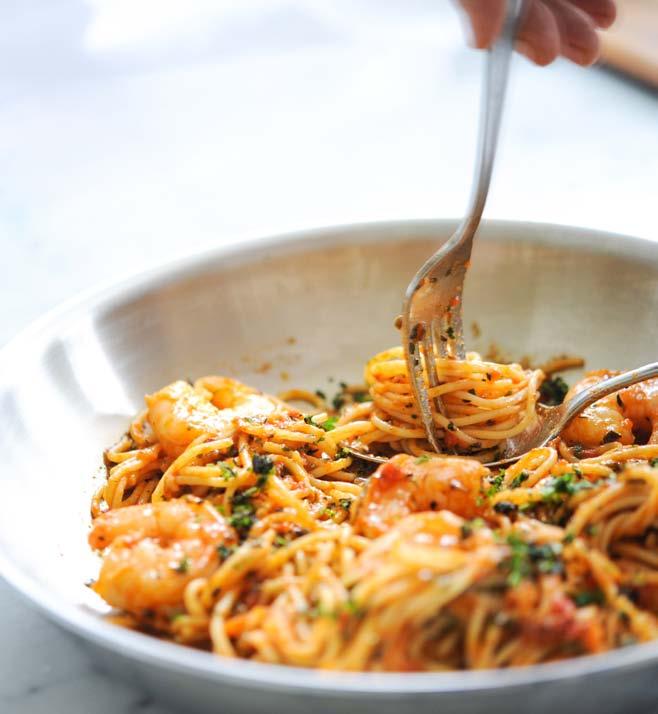
slow-roasted tomato sauce, chilies, fresh herbs, crostini
My first exposure to Portuguese cuisine was in Brazil in the mid- 1980s. The feijoada completa I enjoyed was pure Portugal with a Brazilian twist. It’s a hearty, and heavy, stew served on weekends, chock full of meaty bits, sausage and beans, and enjoyed with several side dishes including kale, sliced oranges and indigenous farofa, a toasted manioc flour. A decade later a trip to Portugal revealed another layer of deliciousness. Plump sardines served from an outdoor grill, squid served in its ink, a soulful caldo verde soup and a revelatory surf and turf dish of pork and clams, often called alentejana. These two natural bedfellows were brought to the table in a clam-shell-shaped hinged pot, called a cataplana, revealing aromas of paprika, garlic, clam nectar, wine and olive oil that made me weak in the knees. I now make this regularly at home, conjuring sweet

We are excited for this upcoming year as many of you have started to discover the improvements and new fare that have arisen since the post fire reconstruction. With our modernized kitchen we have been able to implement many aspects of our past farm to table restaurant “La Piola” into our current bakery model. The take home meals like Osso Buco, Nonna’s Meatballs, Lasagna, Eggplant Parmigiana and Chicken
Cacciatore have been a popular success since our reopening. Come and experience the expanded selection of Panini, eat in and to go fresh house made pasta and gnocchi lunches and other delicious savoury offerings. Be avant guard and consider us as your go to shop for catering options; we can provide you with all your unique needs from appetizers to delicate sweets.

travel memories, and I encourage you to try your hand at it. Chunks of pork shoulder are marinated in paprika, bay leaves, piri piri, garlic and white wine (I prefer a vinho verde for authenticity). The meat is then sautéed in a deep saucepan and simmered in the marinade until tender. Add fresh clams and cover until the shells pop open. Serve with thick chunks
Vinho verdes have a zippy freshness, wines from the Alentejo are rich and fruit-forward, and the Douro region produce some powerhouse reds. All are worthy of exploration.
Many Portuguese-Canadians hailed from the Azores, a fairly remote Portuguese archipelago composed of nine islands















We have the cookware, classes, and recipes to help make the most of your time together.
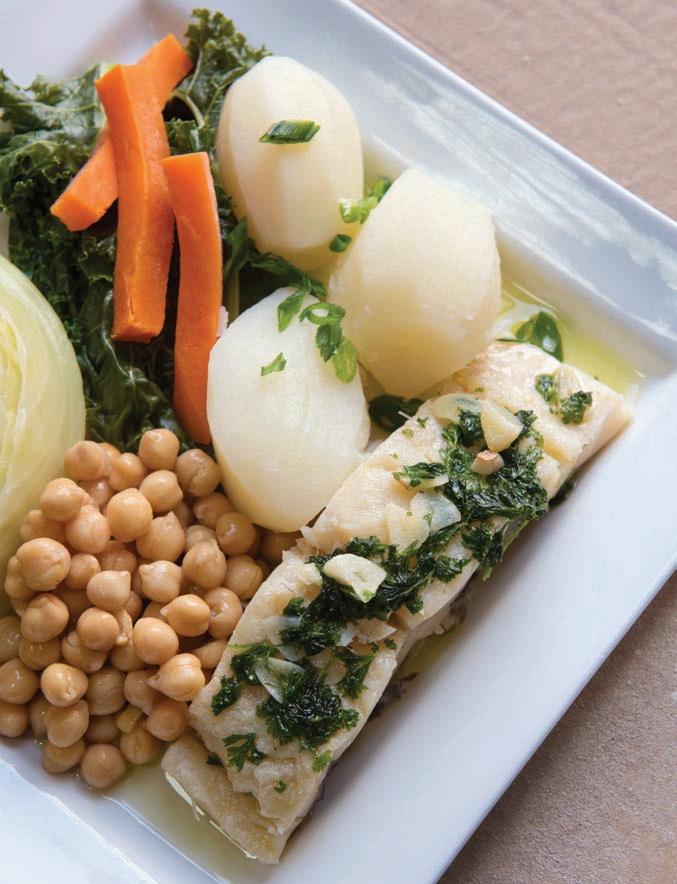
“Feeding people is caring for our basic needs, and an expression of love; it brings comfort, health, strength, and happiness. For me there is no greater joy than sharing a meal with those I love the most.”
of bread for dipping and more wine. Bonus points are in order if you hunt down a stainless or copper cataplana to cook it in.
Speaking of wine, there is more to the Portuguese portfolio than Mateus, that iconic Portuguese rosé in the flaskshaped bottle. And the selection in B.C. has never looked better for quality, diversity and at friendly price points, too.
bathed by the North Atlantic. In British Columbia, Victoria is one such Azorean stronghold, along with Vancouver, Kitimat, Prince Rupert and the Okanagan, where they came to work on fruit farms in the 1950s. In Victoria, ingredients can be found at Maria’s on Shelbourne, owned and operated by Maria Periera for the past 39 years. She carries foods from all over Europe but
Anna Hunt Chef/Instructor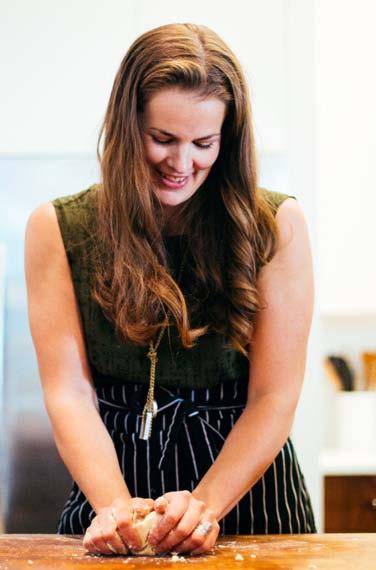

hones in on the Portuguese specialties. One of my favourites is the São Jorge, a wonderful unpasteurized cow’s milk cheese from the Azores island of the same name, renowned for its dairy cattle. The cheese has a hard rind with a rich and buttery tang with hints of pepper. It’s excellent eaten on its own or enjoyed on your favourite bread with a drizzle of Portuguese olive oil. I prefer the Saloio brand, a floral and fullflavoured oil.
While you’re there, pick up a bottle of piri piri, a must-have condiment, a welcome salty and spicy addition to damn near everything, including a marinade for chicken. You might be familiar with Nando’s flame-grilled versions, but branching off on your own is easy as making toast. Simply add piri piri to white wine, garlic and a puree of roasted red peppers. It’s brilliant for whole roasted chicken or spatchcocked on the barbecue, or even chicken thighs. It makes an easily prepared dish enjoyed any time of year.
Caldo verde, another national, and celebratory dish, is soul food at its finest. Vitaminrich kale, used long before it became a star of the brassica world, is at the centre of this soup, along with slices of pork chouriço, white beans and potato, a comforting and nourishing concoction.
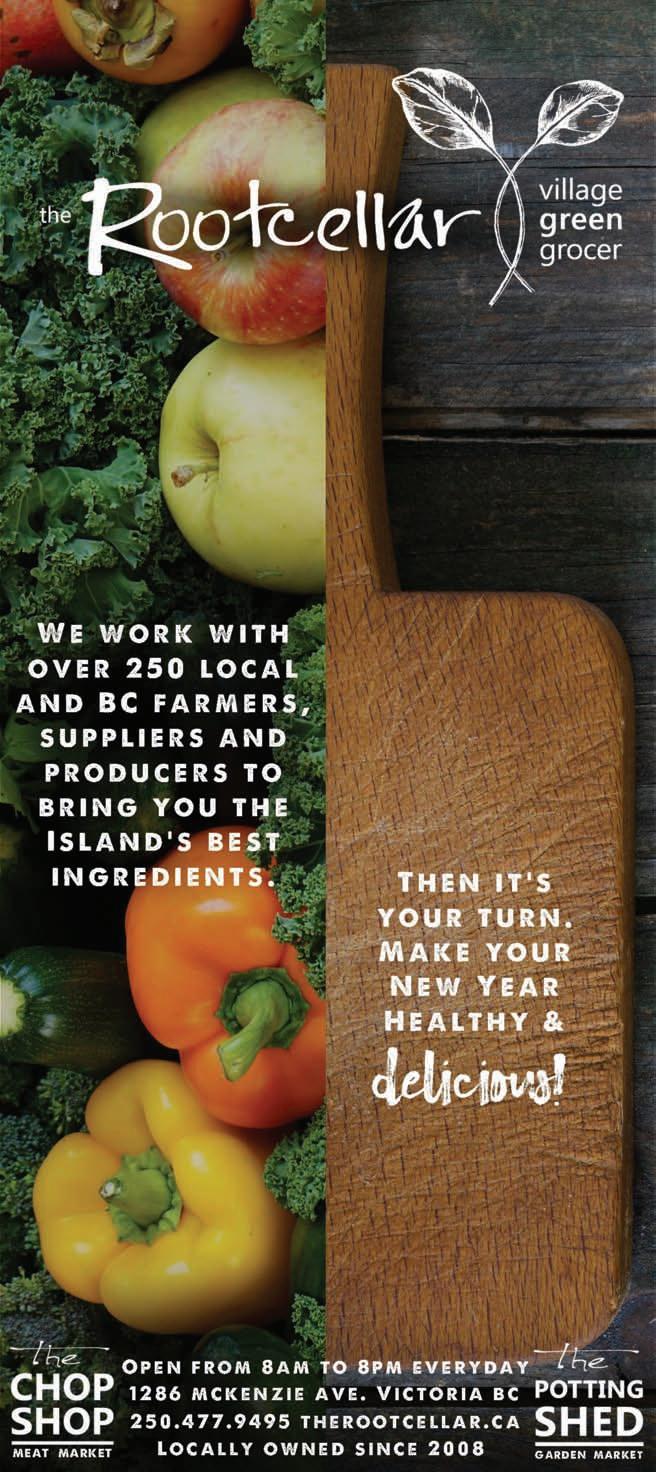
Another passport to Portugal is with canned fish and Maria’s has a vast selection from sardines in tomato sauce to octopus and squid. If you’re not up for cooking, open a can, add bread and some wine for a satisfying snack before dinner or as dinner. They’re also convenient to have on hand if you have to pull together appetizers for last-minute guests.
I would be remiss if I did not mention bacalhau, the salted and dried cod, a staple of Portugal and the Portuguese people. It’s enjoyed several times a week, not just for special occasions, and the country claims close to 1,000 recipes for the preserved fish. The cod is prepared by soaking in several changes of water and can be time-consuming and a tad costly for first-timers. The most common dish, and the one I’m familiar with, is served with boiled potatoes and eggs, olives and a good dose of olive oil. For a true taste of how it’s done, the Casa Nova Bakery on Esquimalt Road makes several versions, along with many other specialties you would be remiss not to try. With production overseen by manager Marco de Medeiros, Casa Nova has been in business for 20 years, with founder John de Medeiros (no relation), handling the catering side of the business. Both are from the Azores.
Bacalhau is offered three different ways here: boiled with potatoes, eggs and kale; fried in olive oil with garlic and parsley; or grilled and served with luscious caramelized onions and tomatoes. You can also try the traditional bifana sandwich at the 20-seat bakery, open for breakfast and lunch. Tender pork loin is seasoned with sweet pepper paste and garlic and served on a signature Portuguese bun with caramelized onions for extra flavour depth. The same sandwich treatment extends to the housemade chouriço, a smoky Azorean-style sausage available spicy or mild. The pasteis de nata, essentially an egg custard tart with a caramelized top, maintains a cult-like status among aficionados, who can wax poetic about the quality and ratio of crust to creamy custard. This delicacy is hard to find outside of Victoria, especially made fresh, and the bakery does its best to keep up with demand. Although they make almond, pineapple and coconut tarts as well, the nata stands as an icon of Portuguese tradition and reflects Casa Nova’s pride in providing Victoria with a taste of their country’s culinary traditions.
“We can’t let the culture die,” says Marco de Medeiros, “even though we are so far away from our country. It’s important to have a nest, a place where people can enjoy our traditions.”
If you’re suffering from palate fatigue and in search of new flavours, take refuge in the foods and wines of Portugal. Welcome to your new addiction!
“Caldo verde, another national, and celebratory dish, is soul food at its finest.”





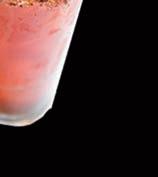

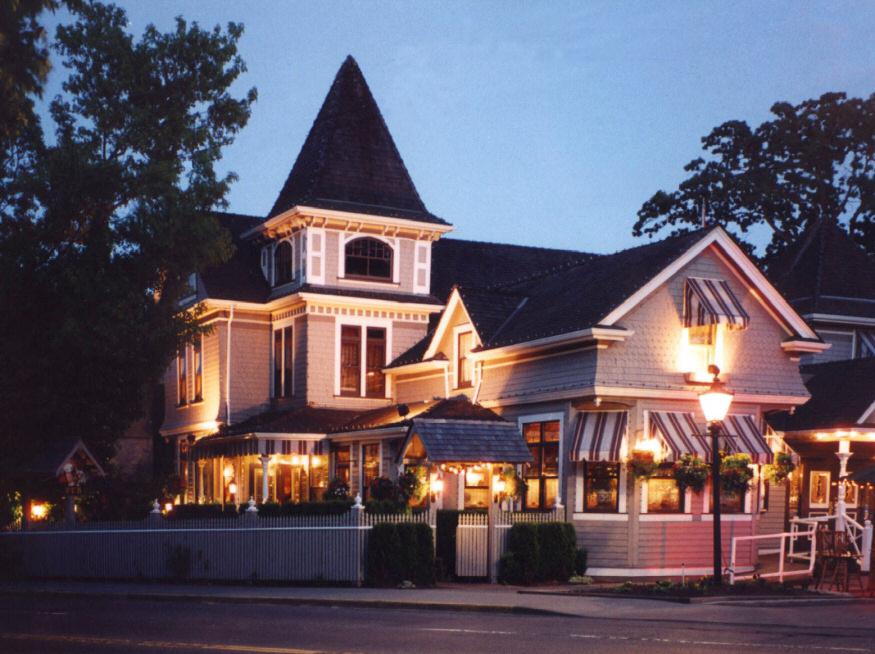
















WHEN IT COMES TO FOOD, SOMETIMES REVAMPING OLD favourites in innovative ways can lead to enhanced taste and nutrition. That was certainly the case in 2016, when some of the year’s best new health foods were culinary classics enhanced by a little nutritional update. Here are four outstanding examples, three of them made right here in B.C.

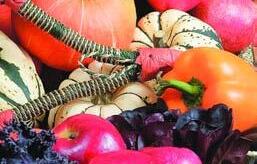

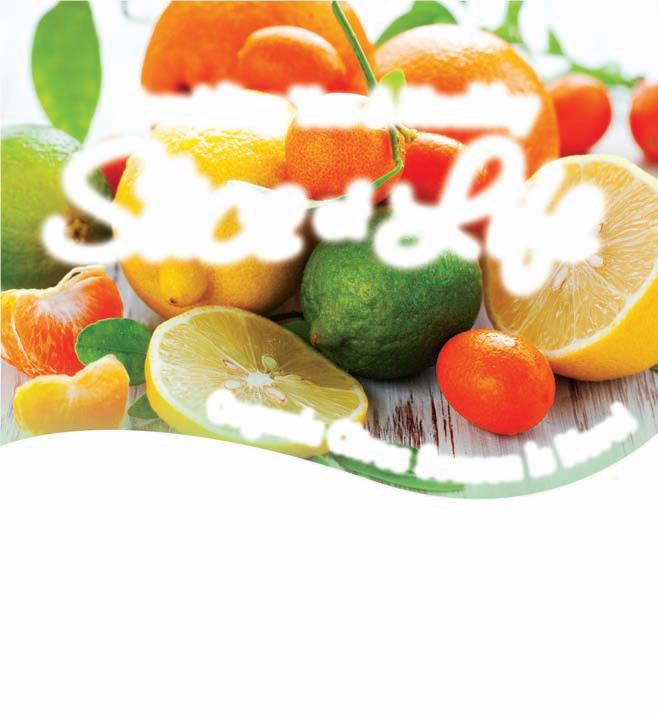
One Degree Organics Sprouted Oat Granolas - B.C’s own One Degree Organics has elevated granola to superfood status. The company achieved this culinary feat by replacing the refined sugars and questionable oils found in most granolas with only the finest ingredients. Their new line of sprouted granolas contains certified organic, gluten-free sprouted oats. Lightly toasted to crunchy perfection with a smidgeon of organic sunflower oil, the oats are combined with a variety of organic spices, flavours and superseeds. What makes sprouting noteworthy? It increases the oat’s protein, vitamin and mineral content, in addition to enhancing the grain’s flavour and digestibility. Low in fat and sugars, One Degree’s granolas are available in four flavours: Cinnamon-Flax, Honey-Hemp, Vanilla-Chia and Quinoa-Cacao. Try any for a nutritious, delicious start to your day.
Kaslo Sourdough Pasta - Made with a natural sourdough culture, these sublime pastas offer up the same health benefits as other traditionally fermented foods, like yogurt. Yes, folks, that means they’re actually rife with the good-for-you probiotics that have been shown to enhance human health in myriad ways. What’s more, fermenting the pasta dough not only improves its digestibility and nutritional profile, it enhances its flavour and texture too. While some pastas I’ve eaten tend to “sit” in my gut, reminding me of my indulgence for hours afterward, these pastas caused no such ill effects. And the welcome bonus—they’re among the best tasting pastas I’ve ever eaten. A definite tip of the hat goes to the good folks in Kaslo who created this new noodle!
Fatso Peanut Butter - This update on the age-old classic kicks its health factor up a notch by infusing peanut butter with a combination of MCT (medium-chain triglyceride) oil, coconut oil, macadamia nut oil, chia seeds and flax. Why add this specific blend of fats to an already yummy spread? Studies show this unique blend of “super fats” can help reduce the risk for cardiovascular disease and diabetes, aid in weight management and more. The best news for die-hard PB lovers—Fatso retains all that old-fashioned roasted peanut flavour you first loved as a kid.
Chosen Foods Avocado Oil Mayo - If you’ve been “holding-the-mayo” for health reasons—you no longer have to. Like me, you may have been concerned about the genetically modified seed oils, like canola, that are prevalent in most commercial mayos. Unfortunately, even the “organic” versions of these oils are deleterious to human health. Thankfully, Chosen Foods has developed a sublime avocado oil mayo that health-conscious foodies can enjoy with impunity. Not only is avocado oil brimming with heart-healthy monounsaturated fats, it also contains betasitosterol, a plant compound that can help reduce the risk for certain cancers. So go ahead, make that tuna salad and don’t hold the mayo!

“NEW
There is likely nothing more central to the human experience than the gathering, preparation and eating of food.
and the appetite for wheat, beef and c pac c ary
ken (and other meat/fish hic aged k hain. As the western diet
hanging ame c those s kets. Add in population growth — concentrated in skyroc
Changes in dietary habits are having profound — if unintended — consequences in the global food supply chain. As the western diet spreads east and south, the reliance on packaged foods increases and the appetite for wheat, beef and chicken (and other meat/fish protein) skyrockets. Add in population growth — concentrated in those same regions’ changing diets — and this accelerates the problems from emerging issues to immediate risks.
ainable and ethical sourcing of food quic


kly becomes a whac
k-a-
Sustainable and ethical sourcing of food quickly becomes a whack-amole type problem as solutions to one problem create stress elsewhere in the food chain. This can make it very hard for people to know how to approach these issues without becoming overwhelmed and gloomy.
In the U.S. from 1960 to 2000, the share of income the average household spent on food dropped by almost half as food production was industrialized.1 That downward trend has now ended and perhaps heralds a necessary De-industrial Revolution of the food business.
ood Gundy

, a
We are the Blue Heron Advisory Group of CIBC Wood Gundy, a team of portfolio managers who are passionate about managing money in a socially responsible and sustainable way. We became more familiar with these issues as our clients asked us to look earnestly at the risks of climate change on their retirement savings. We started our exploration of these risks by examining fossil fuels and energy use. After applying the same risk criteria across all industries, sustainable food risks began mushrooming.
We felt compelled to leave our spreadsheets for a moment, and examine our shopping carts, menus and dinner plates, because this is where we can best understand the risks and explore potential solutions.
In the coming year, we’ll be talking to local stores, restaurants and service providers about how they are addressing water stress, deforestation and labour issues. Through this four-part series in EAT Magazine, we look to present some possible solutions or actions to help us be the change we wish in the world.

Neil Chappell and Graham Isenegger are Investment Advisors with the Blue Heron Advisory Group of CIBC Wood Gundy in Victoria.



ictoria. y Victoria.
.iesere S

1 Source: USDA, Economics Research Service, Food Expenditure Series.
., a subsidiar
ember of the C y a M subsidiar
please ct
view.TdvisortAestmen
CIBC Wood Gundy is a division of CIBC World Markets Inc., a subsidiary of CIBC and a Member of the Canadian Investor Protection Fund and Investment Industry Regulatory Organization of Canada. If you are currently a CIBC Wood Gundy client, please contact your Investment Advisor.The views of the Blue Heron Advisory Group do not necessarily re ect those of CIBC World Markets Inc.
Cinda Chavich
Elizabeth Monk
PHOTOGRAPHY
Rebecca Wellman
Elizabeth Nyland
FRESH, BOLD & SPICY
THIS PAGE:
Yalla’s Halloumi Kale Salad; house pickled veg; Hawai’j Spiced Fries; Hummus Plate (this changes regularly, and this one is made with roasted Brussels.

Owners Joel Pollock and Pam Smith, Interior of Yalla
REBECCA WELLMAN

THERE’S A NEW KID ON THE BLANSHARD street “food block,” a funky little spot called Yalla with a menu of fresh and inspired Middle Eastern street food. Tucked into the old Discovery Coffee location, it’s the brainchild of chef Joel Pollock and his wife Pam Smith, a pair with deep roots in the food and wine business, and experience ranging from Eden at The Rimrock Hotel in Banff to Sooke Harbour House and Stage Wine Bar. A falafel joint might seem like a huge detour for a chef with such upscale experience, but it’s a dream that’s been percolating with Pollock for years. In fact, it was his own “bangin’ falafel recipe”, perfected for friends, that inspired the pair to open Yalla.
“Joel has always wanted to have a little falafel restaurant,” says Smith who is also a trained sommelier and CPA. “I did a spread sheet, crunched the numbers, and we thought maybe it could work.”
And it’s working splendidly. Locals are lining up to take out sandwiches and salads or share a plate of creamy hummus, perched at the bar. And while the offerings are familiar, this isn’t your average shawarma shop.
Along with the traditional pita wraps, filled with slivers of grilled lamb or crisply-fried falafels, and their own pickled vegetables and sauces, you’ll find some unexpected dishes on Yalla’s compact menu. The hearty
kale salad, topped with cubes of fried Haloumi cheese and sweet cherry tomatoes, has lots of fresh mint and parsley in the mix, along with some toothsome bulgur wheat. The hand-cut Kennebec fries are dusted with Hawai’j (Pollock’s lively version of a peppery spice mix from Yemen), then served with a yogurt and sour cream dip, shot with a citrusy hit of preserved lemon, to balance the heat.
Each falafel is turned out individually, using a hand-held mold, and fried fresh to order. Fluffy and filled with bright green herbs on the inside, with a nice crunchy exterior, they’re vegan and gluten free.
“We’re cooking 15 kg of chickpeas a day – so many chickpeas!” says Pollock of the ingredient that’s ground for both falafels and his creamy hummus, a dip that’s served with ever-changing daily toppings (from baba ghanoush to sautéed mushrooms, butternut squash or ground meat) and slathered into every sandwich wrap. Wraps also include Pollock’s house-made sauces, pickles, and condiments – the fiery Zhoug is a chimichurri-like fresh green chili and cilantro sauce, and the golden Amba, an exotic puree of spiced mango, garlic and turmeric, add layers of exotic flavour. Everything is made from scratch – no falafel or tabouli mixes here – and meats are Halal.
The authentic recipes are inspired by a recent trip to
Israel and the West Bank, where the pair explored cafes along the Mediterranean, from Jerusalem to Haifa and Tel Aviv. The regional variations in both falafel and hummus were a revelation, says Smith, as was the refreshing Limonana, a minty lemon slushie drink served from carts on every street corner. It’s on their menu, too.
Yalla is a compact space, clean and spare, with an exposed brick wall and an open kitchen where you can watch the cooks creating your meal. There are a few high top tables in the front to eat in, but the shawarma and falafel sandwiches are wrapped perfectly for take-out, picnicking or strolling.
They’re working on a liquor license but for now have local Cultured Kombucha on tap and soft drinks from Victoria Soda Works. They hope locals will gather at Yalla to share a plate of their creamy hummus and socialize.

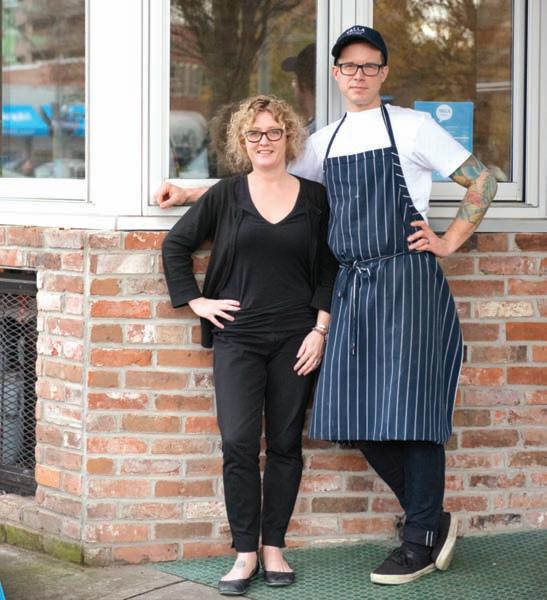
“It’s the Middle Eastern version of our plate of nachos,” says Smith. “This food is all about the culture of sharing.”
Yalla translates to “let’s go” in both Hebrew and Arabic – this new take-out should be your go-to for fresh Mediterranean street eats. Shalom!
CINDA CHAVICH
$26.00 + TAX

820 YATES ST., VICTORIA 250-360-1171
| ZAMBRIS.CA
At Zambri’s, sitting in the airy space beside a large window looking onto the sidewalk, you feel integrated with the streetscape, yet also comfortably ensconced. The brunch menu is integrated as well. There are classic eggs, bacon and potatoes; an Italian twist on French toast; and, for those who might think brunching an effete practice, lunch foods. The Panettone French Toast for $12 is made with the traditional holiday egg bread with candied fruit and raisins. The maple syrup has a twist of amaretto in it, and the delectable pile is topped with a beautiful garnish of sliced orange and red grapefruit. As an alternative to the crab cakes you might see on a West Coast menu, here there are Baccala Cakes for $15. These creamy fish cakes are made with traditional Italian salt cod that has been reconstituted and beaten with Parmesan, egg and flour. They are served on a spinach puree with a smear of tomato sauce. These simple ingredients all combine into a flavour bigger than the component pieces.
If one of your life rules is when in an Italian restaurant eat pasta and/or meatballs, that is covered too. Uovo Fritto con Spaghetti Aglio Olio Peperoncino for $15 is a graceful mound of spaghetti, each strand embraced by an oil and garlic sauce and topped with an egg crisped golden on the bottom. Meatballs and Eggs for $14 is a humorously prosaic name for such an elegant creation. A picture in shades of rust and gold, this dish has a square base of deep-fried polenta topped with flattened meatballs, a perfectly poached egg and a drizzle of tomato sauce. Zambri’s mimosa is the perfect drink to accompany your brunch. It comes with an unconventional yet tasty splash of amaretto, to round out your Italian experience.



I did not need the powerful Morning After Caesar at the stunning Lure restaurant to get me tipsy and convince me I was on to a good thing. I was already getting a choice of brunch dishes in the $13-$14 range while enjoying a view that feels expansive and décor that feels expensive. I was seduced. But about that Caesar … wow. It came with a cornucopia of protein: one skewer of four moist, warm, lamb meatballs, another skewer of garlic prawns. Also stuffing the glass were a jumbo dill pickle and a Blazes pickled green bean. For $18.95, it was tapas tipped into a double Caesar, and that concept works for me.
In terms of more conventional brunches, the Salmon Fritatta for $14 was light and elegant. The egg and salmon pancake featured lacings of kale, chunks of candied salmon and a drizzle of red pepper caramel sauce. The Florentine Benedict for $13.75 was a standout, the freshness and flavour of the spinach and pesto drizzle not only surfacing but standing out. The chef used a béarnaise rather than a hollandaise sauce;
perhaps the white wine vinegar seasoning helped the vegetables shine.
If brunch reads “dessert” for you, choose the Decadent French Toast for $13.25. Wedges of eggy French bread are served with a classic 1950s Bananas Foster sauce of caramel, rum and banana liquor that drapes over the French toast and warmed bananas. This confection is garnished with plump dried cranberries and toasted pecans for contrast and is indeed a decadent and filling start to the day. All this is served in a serene environment with a view of the Inner Harbour, for a brunch that feels glamorous but is affordable.
Toasted pecans, cranberries, raisins, bananas foster sauce (in front).
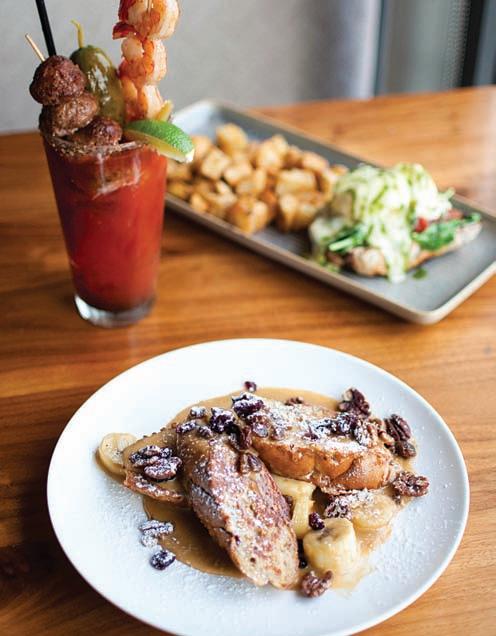
Florentine Benedict: Spinach, pesto, tomato relish, grilled artisan bread, kennebec potatoes, Bernaise sauce (behind).
"The Morning After" Caesar: Double caesar with 4 lamb meatballs, 4 garlic prawns, jumbo pickle and pickled beans.
ELIZABETH NYLAND
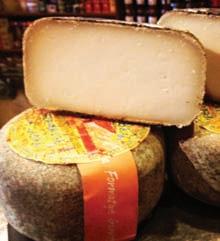
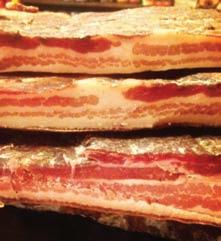
























Clarke & Co has just launched a Sunday “Bartenders Brunch” where loyal clientele can soothe their hangovers and heal with delicious, protein-focused bar snacks and meals. Which is ironic, because Clarke & Co is probably where you got the hangover in the first place, what with its hip nightlife vibe and list of 20 classic and house cocktails (“Lazy Lover” is one such creation, but I am saving that for an 11 p.m. meal rather than an 11 a.m. one. Plus, I want to hear the backstory). The brunch menu is a mix of classic and clever. The House Smoked Salmon Benny for $13 is subversively healthy while feeling decadent. A crispy golden (and gluten-free) latke is topped with wilted kale and wild mushrooms, then graced with translucent smoked salmon and a sprinkling of kale chips. The hollandaise, which I consider a calcium-rich health food, is of a quality that inspires discreet wiping of the sauce remnants from the plate with a finger. I put this dish in the category of “elegant.”
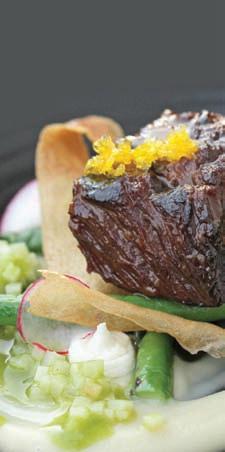
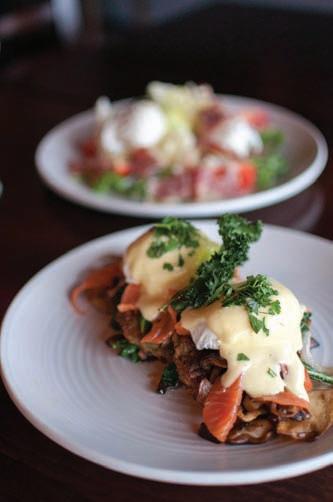
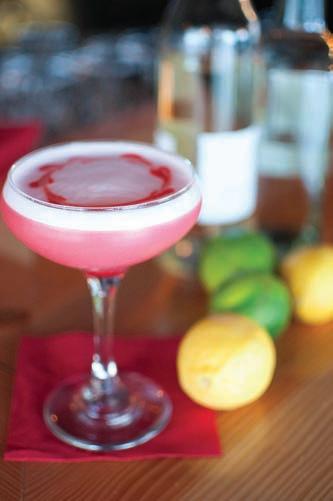
The best-selling $9 Scotch egg I would place in the “playful” category. Putting hollandaise on a Scotch egg apparently makes it a brunch item, and I would agree, especially when the Scotch egg features plenty of sausage and a runny yolk. The Prosciutto Cobb Salad for $12 is in both categories. The buttermilk and gorgonzola dressing and the heirloom tomatoes make this a salad worthy of a fine French bistro, and the three poached quail eggs perched atop it add a bit of wake-me-up fun.
Clarke and Co is, at night, a bar as well as a restaurant, so the breakfast Caesar needs to be mentioned. Like the one at Lure, this Caesar is assertive, meaty and spicy, this time with add-ons of sweet housemade smoked cod, house-smoked olives and a very creative house-pickled celery. Both the Caesar and the proteinrich food offerings are indeed excellent warriors in
MossStreetMarket.com


Truly memorable dining experiences are created when extraordinary food is shared with those closest to you in an atmosphere unlike any other – and that is what makes dining at the seaside Oak Bay Beach Hotel truly unique.




Always

THE FIRST SNOW OF THE SEASON WAS FALLING in gentle swirlingflakes when I drove up the Malahat to the Villa Eyrie Resort in December. The old Aerie, perched at the end of a narrow mountain road, was bought by a group of luxury automotive dealerships and reborn late September with a $2-million renovation that includes the Tuscan Spa, the motorsport-themed Driver’s Lounge and the 80-seat Summit Restaurant headed by renowned executive chef Terry Pichor.
Part of a venture that includes a world class motorsport circuit with seven tracks in nearby Cowichan Valley, the European-style resort is an elegant, luxurious hideaway only 10 minutes north of Goldstream. I couldn’t enjoy the 180-degree views of Mr. Baker to the Olympics because of the weather, but both my south-facing room and the restaurant’s floor-to-ceiling windows looked down upon Finlayson Arm, and, when the sky cleared briefly, over Bear Mountain and the Strait of Juan de Fuca.
Pichor, a Manitoba-bred, Vancouver-trained, awardwinning chef, brought a couple of colleagues with him, including chef de cuisine Carmen Ingham, from a sevenseason stint at the exclusive Sonora Resort in the Discovery Islands. Pastry chef Matthias Conradi (Wickinninnish Inn, Cafe Pamplona and Patisserie Conradi in Tofino) is another star in Pichor’s kitchen team who is helping bring customers to The Summit for lunch and dinner.
Pichor, Ingham and I had a visit during a lunch of chef’s own Handmade Black Pepper Cavatelli Carbonara, aged
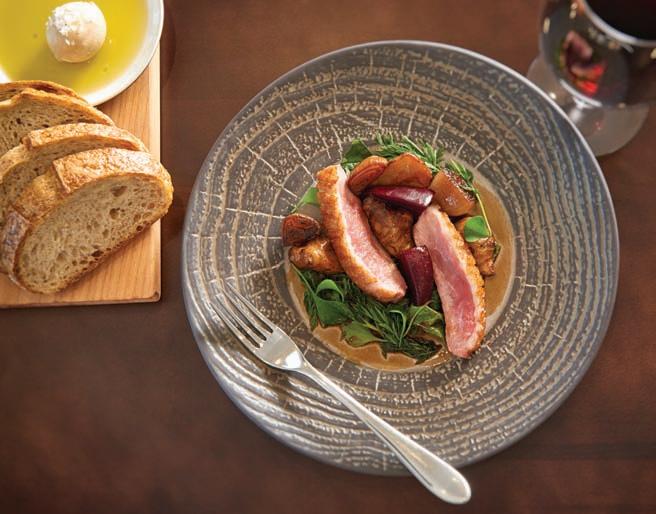
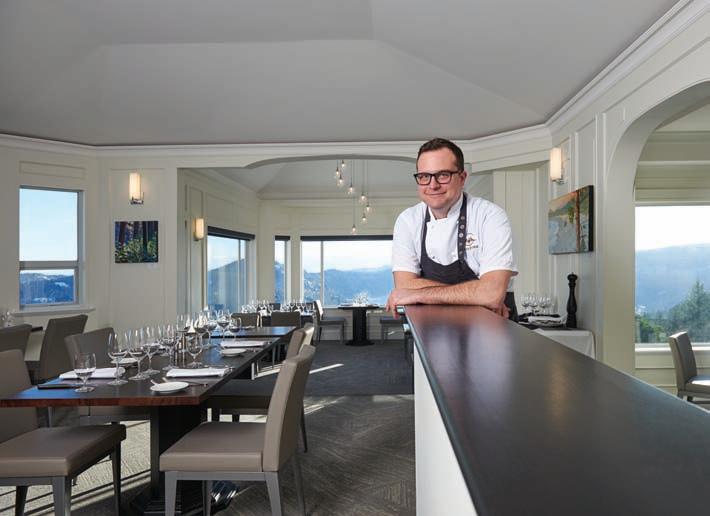
Parmesan, pancetta, poached egg and toasted focaccia. I was excited to learn about Villa Eyrie Resort’s plans for monthly Wine Society Socials. The first of these, in December, featured wine educator Ingo Grady of Mission Hill and von Mandi Estates for which Chef Pichor designed a special five-course dinner menu, Events in 2017 will feature small, acclaimed wineries like Naramata’s Foxtrot Vineyards. Check out villaeyrie.com/ summit-restaurant for more information.
After lunch I tried a couple of sessions in the Tuscan Spa, with Elaina Barale treating me to my first-ever pedicure, followed by an intense reflexology session with Anna Lovering that left me pleasantly groggy and weak-kneed. I moved my dinner reservation back an hour and after a rest and a long time in my suite’s plate-glass shower, I joined the other diners at one of The Summit’s simple black tables with comfortable, olive-green leather armchairs. Glass cabinets with auto racing memorabilia lined the bright, white walls and a large attentive staff worked the room with knowledgeable professionalism.
I started my meal with Warm Autumn Salad combining roasted sunchoke, Delicata and Kabocha squash, carrots and beet chips with arugula, pickled shallot, preserved garlic and a local wildflower honey dressing. The sweetly roasted fall flavours and house rye bread paired nicely with a Tinhorn Creek Merlot, which also worked well with my pasta course, Braised Wild Boar Tortellini. All pastas are freshly made in-house, and these tender, subtly flavoured disks swam in a delectable charred onion broth.
I chose Lightly Smoked Black Cod from a list of mains that also offered a vegetarian-friendly autumn vegetable dish, Yarrow Meadows Duck Breast, Roasted Peace Country Lamb Sirloin and 40-Day Dry-Aged Cache Creek Strip Loin. The delicately flavoured cod embodied chef Pichor’s respect for his ingredients. Pichor’s cooking is based on quality ingredients and an almost-egoless lack of culinary fussiness. His lightly smoked cod was lovingly framed by a Sardinia-inspired Fregola Sarde, chanterelles and an understated butternut squash brodo. Pastry chef Matthias Conradi produced a dollop of honey-sweetened quince sorbet as a palate cleanser before a lagniappe offering of almost-raw venison paired with red and yellow beets and huckleberries in a chanterelle sauce. When chef de cuisine Carmen Ingham brought the dish to the table on a rough-hewn, pottery plate, he smiled shyly and said, “Everything we talked about earlier ...” referring to our post-lunch conversation about local and seasonal ingredients.
It was amazing and required a suitable dessert coda: The Summit’s Roasted Fig Leaf Panna Cotta with red wine poached pear and almond tuile. It was a perfect finish to a truly memorable meal, and I headed back to my suite for a relaxing soak in the double-sized tub before climbing into bed for a deep sleep.
The next morning, the snow and rain had stopped and the clouds were lifting above Bear Mountain. A cup of latte made from Lavazza Italian coffee kick-started my day, and chef’s Eggs Benedict lived up to its “classic”
description, although I’m sorry I didn’t get to try the ricotta pumpkin pancakes or panettone French toast.
Before checking out I searched Villa Eyrie’s gift shop for something to bring home to my sweetie, but neither the array of driver’s gear or the Italian-themed books on offer seemed appropriate for the prodigal traveller’s return. Next time I go
The concept behind the food we’re producing at Villa Eyrie Resort’s Summit Restaurant is coastal-inspired Italian cuisine. Our menu design reflects this, but our offerings improvise with seasonal, local ingredients and my take on Italian dishes. For example, the Braised Wild Boar Tortellini is a typical northern Italian recipe with a meat-based brodo that we make with a charred onion broth. I love the sweet-bitter balance of the onions. We plate the tortellini with Brussels sprouts, foraged chanterelles and other wild mushrooms. The boar is from a farm on the northern B.C./Alberta border. We use Anita’s Flour from Chilliwack and Italian semolina for our homemade pasta. Lockwood Farm in Cowichan Valley is our source for free-range eggs. They also supply us with a weekly lettuce delivery, as is Dragonfly Farm in Duncan. A guy near the resort brings us micro-greens, but most of our vegetables are from Saanich Organics.
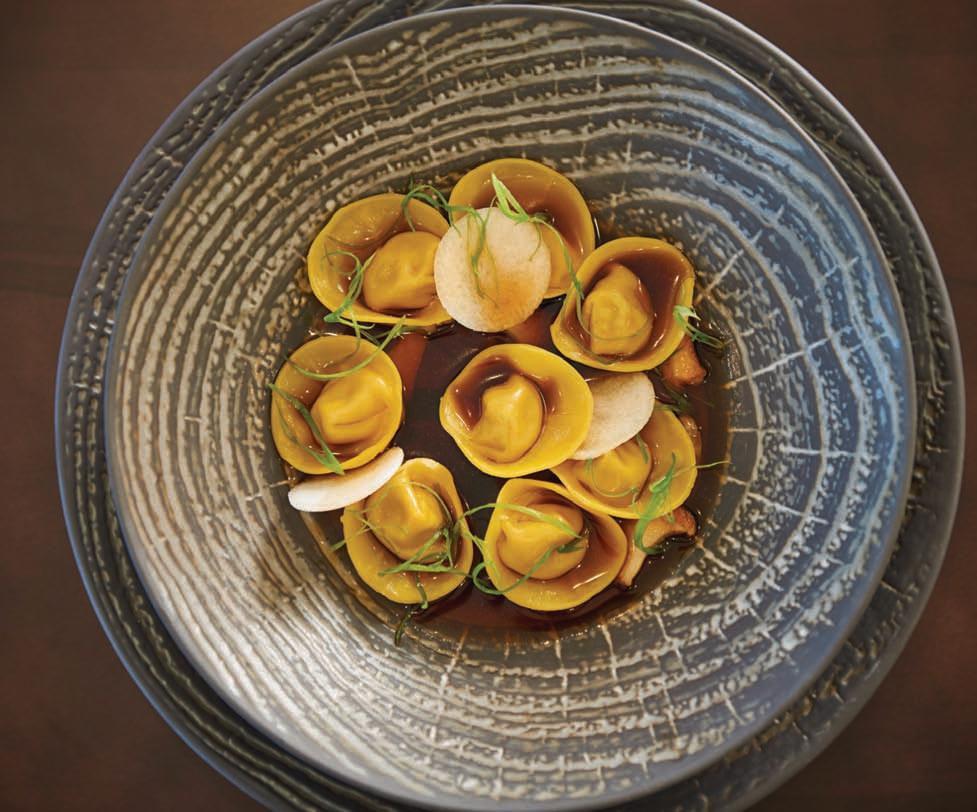
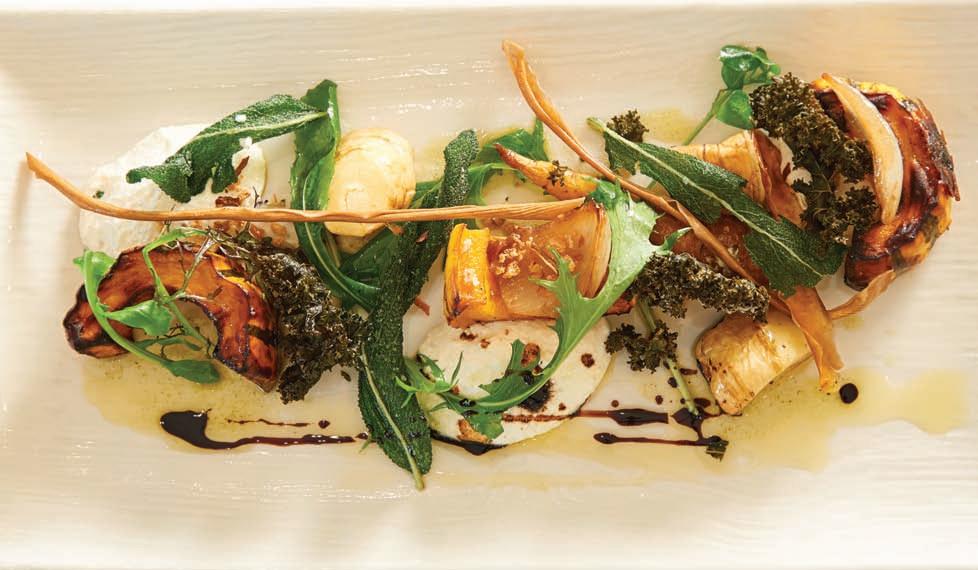
My biggest challenge has been figuring out what is around locally in winter. I spent the last seven years at Sonora Resort, a May-to-October operation. Here I have to get creative with simple ingredients around all winter. Saanich Organics closes down for a few weeks in January, so I’ll contact suppliers at smaller farms to figure out what will be available, what we should preserve by pickling, and what to cellar like squash, parsnips and potatoes.
I’m trying to use Vancouver Island sources wherever possible, but deliveries up here above the Malahat are tricky. Someone from Saanich Organics makes a delivery while driving home to the Cowichan Valley. I’ve got a little greenhouse behind the kitchen with chard and herbs, and I’ll expand into a larger one soon. There are plans for an orchard on a neighbouring property the resort recently bought, but that’s a 10-year plan. I’m establishing relationships with local foragers too. A guy brought in huckleberries, which I’ve pickled and frozen. You’ve got to stretch out winter supplies that way. I’m dehydrating wild mushrooms for soups and sauces and using wild game, sheep sorrel and chickweed as well as shellfish like local clams, mussels, oysters and scallops.
to Villa Eyrie Resort, I’ll take my wife. That’s the best present I could hope to find.
Villa Eyrie Resort and Summit Restaurant 600 Ebadora Lane, Malahat, 1-250-856-0188 villaeyrie.com + info@villaeyrie.ca
At a recent charity herring sale for B.C. Children’s Hospital, we got 20 pounds of herring. A traditional southern Italy dish is pickled herring with fennel and onion. I’m combining that with the local idea of smoking fish. The fish is a really important cornerstone species, and I hope more is available in the future. It tastes so good fresh!
I’m getting more octopus and Humboldt squid on the menu soon too. They’re bycatch from commercial fishing, and it’s the responsible thing to do. The winter menu is a work in progress, but I’m really enjoying it.
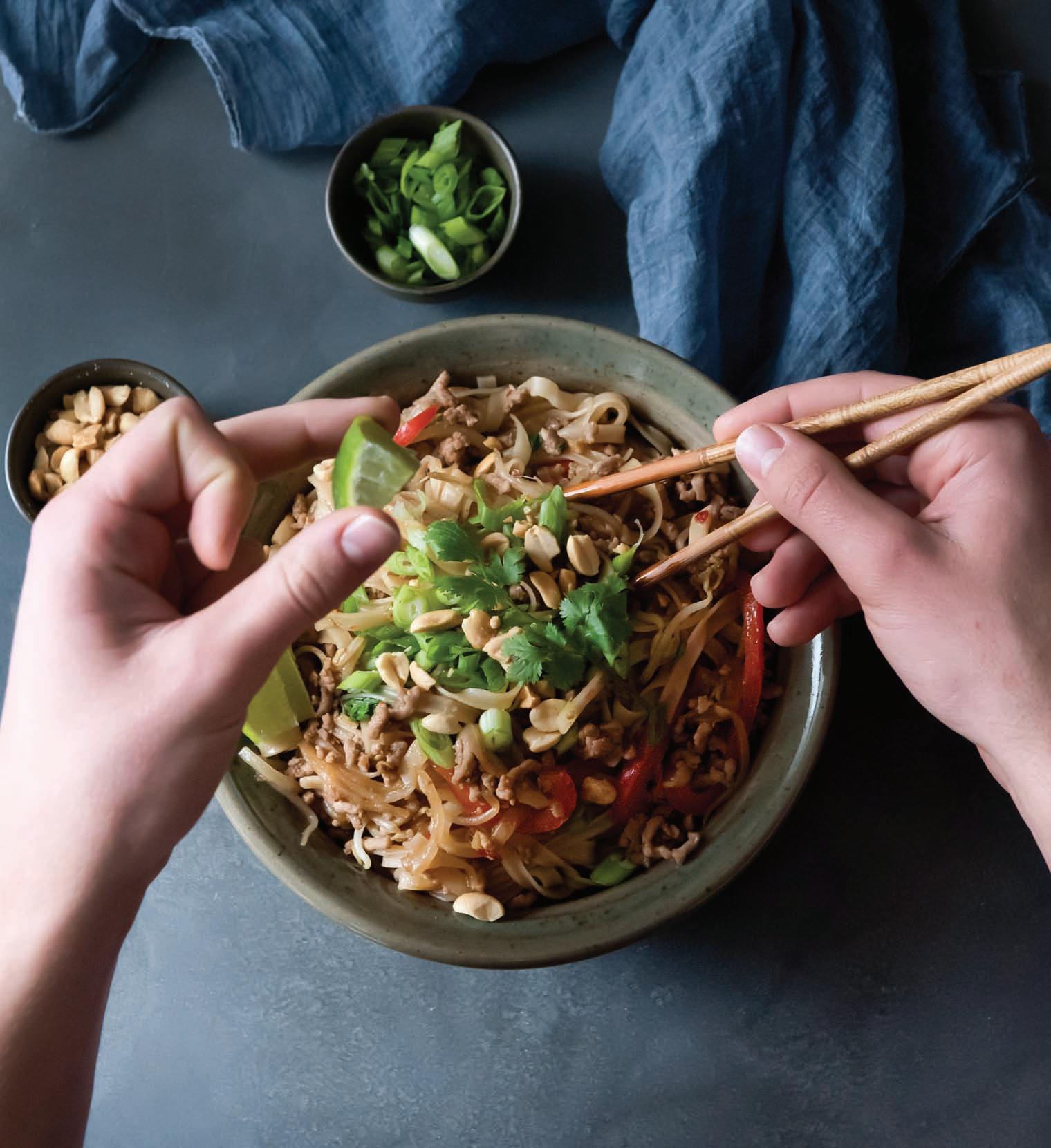 RECIPE, STYLING + PHOTOGRAPHY
Rebecca Wellman
Photograher Rebecca Wellman ditches the post-New Year cleanse diet to dig into a spicy bowl of rice noodles, veg and ground pork. So good!
RECIPE, STYLING + PHOTOGRAPHY
Rebecca Wellman
Photograher Rebecca Wellman ditches the post-New Year cleanse diet to dig into a spicy bowl of rice noodles, veg and ground pork. So good!
Oh, January, you are a fickle fellow. Just when you get us all prepared for new beginnings and resolutions, more kale and green juice, fresh new pages in our journals and fancy new running shoes, you introduce us to Asian comfort food and entice us back inside with cozy sweaters and bowls of noodles. And a big handful of cilantro of course. Just to maintain our virtue.
Pad Kee Mao is a Thai dish, but, as I believe all recipes should be, I’ve messed with this one a bit and introduced a slight Chinese influence with lots of ginger and some bean sprouts. And if you have Chinese black vinegar on hand, throw a splash of that in, too.
This dish is quite forgiving and calls for creativity with spice and details (tofu, anyone?). Or you can follow it exactly. Either way, your January is set.
Serves 6
Kecap manis, an Indonesian sweet soy sauce, can be found in Asian stores, but if you’re anything like me, you’ll make it yourself (it’s easy).
Kecap manis
1/4 cup brown sugar



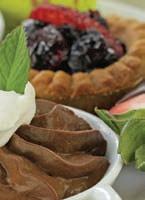
1/4cup soy sauce





1 pod star anise


1 garlic clove, smashed
5 fresh or dry curry leaves (optional)

Combine all ingredients in a small saucepan over medium heat. Stir well and let sugar melt and flavours blend, simmering lightly on low heat and stirring occasionally for about 10 minutes, or until it becomes thick and syrupy. Remove solid pieces and set aside.
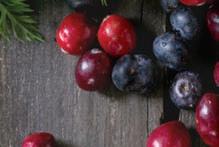



12 oz rice noodles (Angel brand is by far the best)
4 Tbsp fish sauce

2 Tbsp kecap manis (above)
1 Tbsp rice vinegar
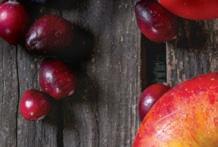

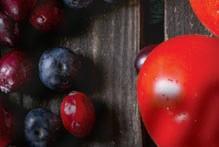


2 Tbsp fresh ginger, minced
1 Tbsp water
2 red Thai chilies, chopped, or 1 Tbsp savoury chili garlic sauce (Thai chilies will be spicier)
3 Tbsp vegetable oil

1 small onion, julienned (about 1/2 cup)
4 cloves garlic, sliced
1 lb ground pork
1 red pepper, julienned (about 1/2 cup)
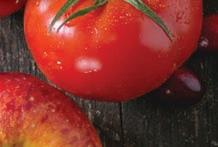
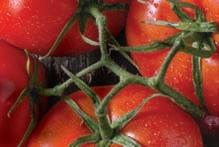

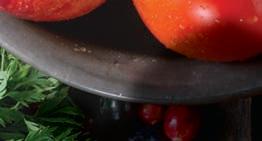
11/2 cups bean sprouts

Juice and zest of one lime
1 bunch cilantro, roughly chopped
1/3 cup well-chopped peanuts
6 scallions, sliced thinly on the diagonal Lime wedges for serving
• Soak noodles in warm tap water for 20 minutes. Drain and set aside.
• Combine fish sauce, kecap manis, rice vinegar, ginger, water and chilies or chili garlic sauce in a bowl. Set aside.
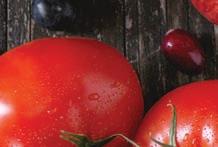
• Heat oil in a wok or large frying pan over medium-high heat. Add onions and stirfry until softened and slightly browned, about 5 minutes. Add garlic and stir-fry for 30 seconds. Add pork and stir-fry until meat is browned, about 4-5 minutes.
• Turn heat to high. Add red pepper and bean sprouts and stir-fry about 4 minutes, moving food around pan constantly. Keep heat high enough that food is frying, not steaming.
• Add the fish sauce mixture. Combine well. Add noodles and lime zest and juice, and stir-fry until noodles have taken on the sauce and are softened, about 4 minutes. Toss in chopped cilantro, and mix until slightly wilted. Remove from heat.
• Portion into bowls, top with peanuts and scallions and serve with lime wedges.

raditional Swiss recipe makes for a cozy, romantic meal on a cold winter night.

PHOTOGRAPHY
André RozonSometimes cooking at home can be way more romantic than going out. This cook-it-together project becomes a restaurant-worthy meal when you use a wide variety of dippers and some unique toppings for the cheese. Prepare the fondue in the kitchen, then take it to the table on its burner. Things can get messy (in a good way) so dispense with plates and simply place bowls of dipping accompaniments on butcher paper rolled out onto the table. Did you know it was a Swiss tradition that if you drop food into the fondue, you must kiss someone at the table? So grab a bottle of wine, some long-handled forks and cozy up with this heartwarming cheese fondue.
Makes 2-4 servings
400 g Gruyère cheese, grated
100 g Emmentaler Swiss cheese, grated
100 g Swiss Vacherin cheese or Swiss cheese, grated
4 tsp cornstarch
2 small cloves garlic, peeled and lightly crushed
1¼ cups Riesling white wine
1 tsp fresh lemon juice
4 tsp kirsch
Freshly grated nutmeg, to taste
Freshly ground black pepper, to taste
Dipping accompaniments, your choice of:
Apples, sliced
Asparagus spears, trimmed
Baby potatoes, roasted or steamed
Crusty bread, cubed
Gherkins
Grapes
Pears, sliced
Sausages, cooked and sliced
Smoked ham, sliced or cubed
IN A MEDIUM-SIZED BOWL, combine the three cheeses and toss with the cornstarch. This will prevent the cheese from curdling. Use a medium-sized, steel or cast-iron pot with an enameled interior to melt the cheese mixture. First, rub the inside with the cloves of garlic, then chop the garlic and place in the pot.
Add wine and heat over medium heat until hot, but not boiling. Stir in lemon juice and kirsch. Add the cheese to the wine mixture a handful at a time, stirring constantly and not adding more cheese until the previous has melted. When it is bubbling gently and has the appearance of a light creamy sauce, season with pepper and nutmeg. Mix well and leave to simmer gently for a few minutes. Place on the fondue burner and serve immediately with the dipping accompaniments and toppings of your choice.
Note: When the fondue has been eaten, there will be a golden crust at the bottom of the pot. Remove it gently and wait one minute, time for it to become slightly crispy. For some, this is the best part!
Tip: To thicken the fondue, add cornstarch mixed with a little white wine. You can also add more grated cheese. If, on the contrary, you would like to make it thinner, add more white wine.
Wine Pairing: A crisp off-dry Riesling or an Austrian Gruner Veltliner.
Parsley and lemon topping: Using a vegetable peeler, remove peel in long strips from 1 lemon. Mince. Transfer to small bowl. Mix in 1/4 cup finely chopped fresh parsley and 3 garlic cloves, finely chopped. This can be made in advance and kept covered and refrigerated.
Dukkah: Roast 1 cup of your choice of nuts and 1/3 cup sesame seeds in the oven. Put 2 Tbsp coriander seeds and 2 Tbsp cumin seeds into food processor and pulse. Add nuts, ground to coarse consistency. Put 1 tsp salt, 1 tsp pepper and sesame seeds and mix briefly. Store this traditional Egyptian recipe in airtight glass jar at room temperature.
Basil and capers topping: In a food processor, blend together 2 cups fresh basil, 1 garlic clove, 2 Tbsp capers, 1/4 tsp salt and 1/2 cup extra virgin olive oil. This can be made in advance and kept covered and refrigerated.





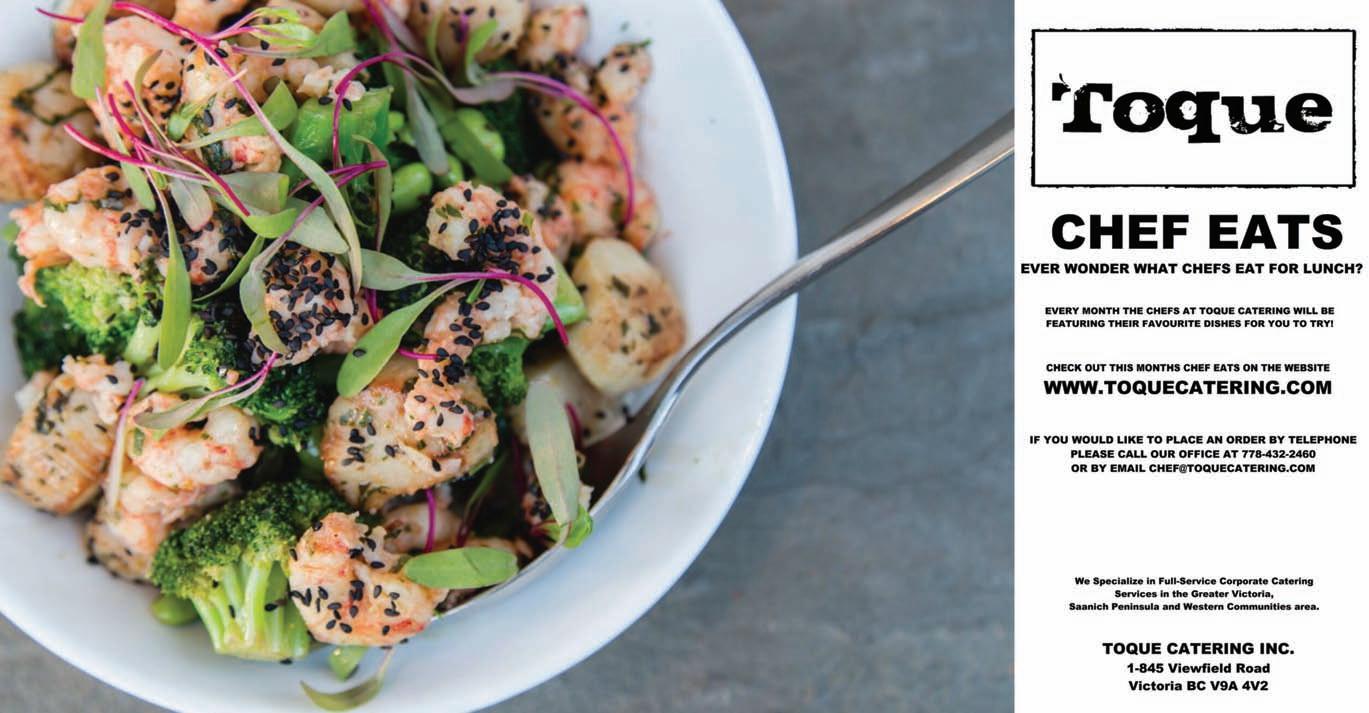
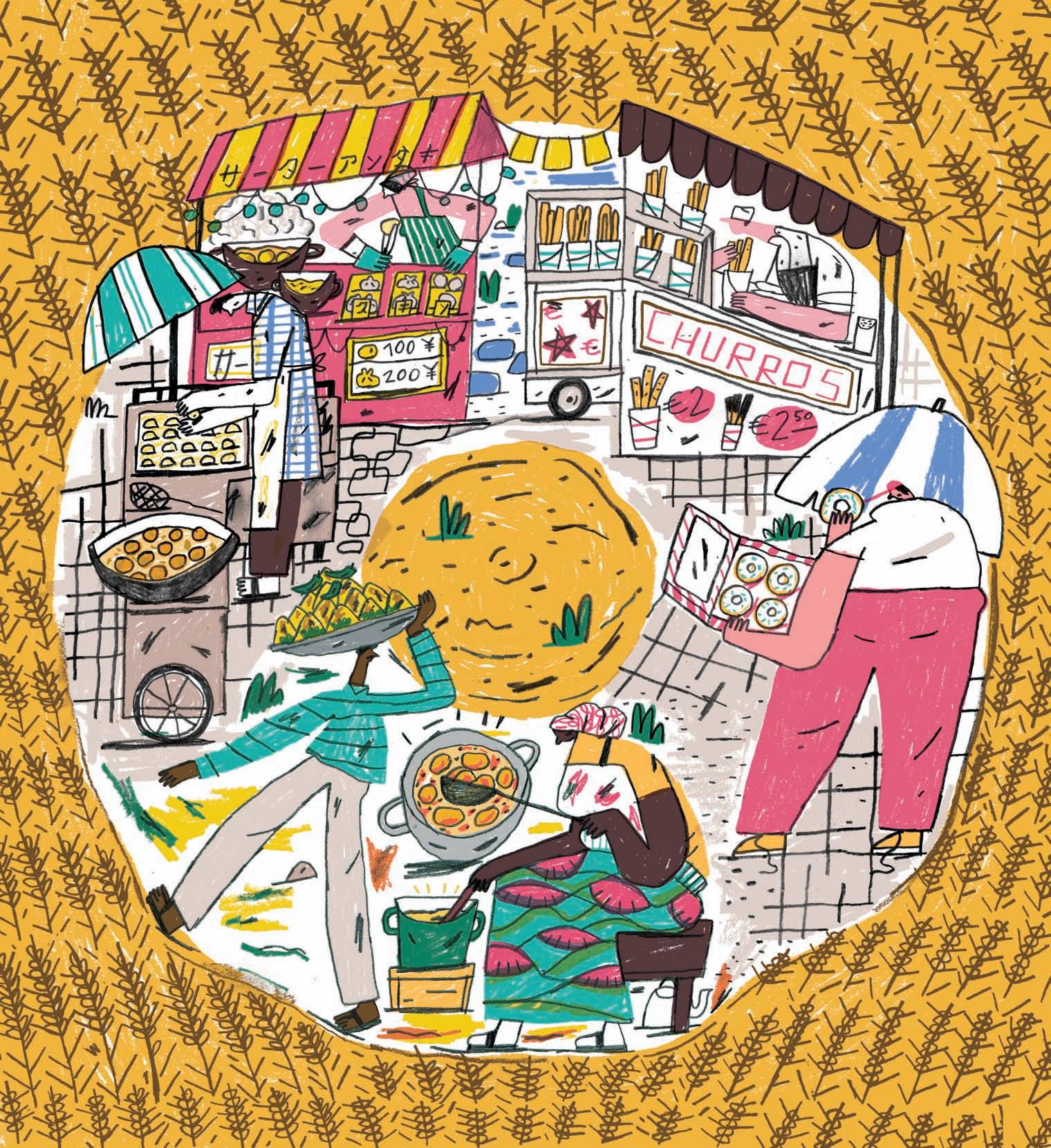
oil that lights up the senses of any sane human being? I’m talking about any fried dough, here: as long as there is flour and water and it is fried, then it fits in this category. A broad one, I know, but there is something essential in our culinary spirit that draws every culture towards fried dough as a universally accepted comfort food. Think about it. Have you ever travelled to a country, a hilltop or far-off hamlet and not found a cultural variation on fried dough? No. No, you haven’t.
Having travelled extensively and to a number of countries where the culinary palate is not extensive, I can attest to the relief I have felt when I have finally stumbled upon that country’s variation of fried dough. Two years ago I moved to Northern Uganda for a time. My options were boiled corn flour, boiled millet flour, boiled sweet potatoes, boiled goat and boiled chicken. One day, as I trudged down a hot and dusty main street in Gulu Town, a scent hit my nose: Remarkable and unmistakable—it was fried dough.
I walked up to what can only be described as a shack with various goods hanging from it, but off to the side in a wide, thin wok-like pan, plump little pillows of fried dough bobbed on a surface of highly questionable oil. I was transported. A wave of familiarity washed over me. I found home. Mendazi, or doughnuts if you must, was my weekly reprieve in Uganda. They weren’t always great, they didn’t taste of much, but they were familiar, and armed with the promise of fried dough I powered through many a day filled with the boiled and the bland. Crispy and golden on its exterior, fluffy and white in the interior, their oily sheen creates transparent patterns on our napkins. I have described the sound of biting into a perfect piece of fried dough to my husband as “escrunch.” You know what I’m talking about: when your teeth break the surface and sink into layers of fluffy bread or pastry, the oil squeezing out along the sides of your tongue. There is a deep sense of satisfaction, warmth and remembering when we have that perfect doughnut, that perfect piece of fry bread. One of the simplest explanations for why fried dough can be found in virtually any culture’s culinary repertoire is that it is prepared with staple supplies and is easy to make. It’s a basic survival food: if you have flour and some form of fat, you can have fried dough, which will make even the worst boiled goat stew palatable. Fried dough transcends cultural boundaries and has a deep and storied history. There is evidence that the frying of various forms of dough occurred between 8000 and 5500 BC, after the invention of pottery allowed for oil to be heated in pots. Imagine that discovery: One day you’ve got some useless weeds that plague your landscape and the next day doughnuts enter your life. I pinpoint this as the exact point in time when we became civilized (or did it mark the beginning of the decline—you be the judge).
The art of deep-frying was truly developed in Japan, then brought to China around 600-700 BC. Between the 1440s and 1530s, the Portuguese were the ones who could claim responsibility for spreading the gospel of fried dough. Under the flag of colonization they brought subjugation, disease, war and forced assimilation, but heck if they didn’t repay the favour by bringing some good old golden fried flour and water to North and South America and, later still, to Hawaii.
At the turn of the 19th century, American writer, historian and diplomat Washington Irving made reference to doughnuts or “sweet balls of dough” (I feel as if he and I have very similar talents, minus the diplomacy), a creation or transplant of the Pennsylvania-Dutch. The modern day American fervour for funnel cakes, doughnuts and other forms of sweet fried dough was solidified in the American psyche forever when it became fashionable at the Chicago World’s Fair in 1893.
Fry bread however, the Native American variation, has a more painful narrative attached to it. Navajo fry bread originated more than 152 years ago when the United States forced Native Americans to make the “Long Walk,” a 300-mile journey from Arizona to New Mexico where they were to be resettled. As they crossed the land, they were unable to cultivate their traditional harvest of beans and vegetables. In order to prevent their captives from starving, the U.S. army introduced them to flour, sugar and lard—the makings of fry bread.
The doughnut—the king of all fried dough—has a very interesting and disputed history. The Smithsonian Institute rightly states, “Of course doughnuts in some form or other have been around so long that archaeologists keep turning up fossilized bits of what look like doughnuts in the middens of prehistoric Native American settlements.” So please, let’s not get all high and mighty on how America and their European diaspora invented the doughnut. It was idolized long before that.
The doughnut, as we know it, apparently came to New Amsterdam (now Manhattan) with the Dutch, who managed to make doughnuts truly unappetizing by calling them olykoeks, or “oily cakes.” In the mid-19th century, Elizabeth Gregory, the mother of a merchant ship captain, used her son’s spice cargo of cinnamon and nutmeg as well as lemon rind to punch up the flavour of the olykoeks she sent with him on his voyages. Finding the dough would not cook through to the centre, she stuffed them with hazelnuts and walnuts. And there we have a neat and tidy origin of the name “doughnuts.” Where did the hole come from? Gregory’s son Hanson gets the credit for that. There are numerous variations on how and why Hanson made the hole. One theory claims that, in need of both hands to steer the ship, he jammed one of his mother’s doughnuts onto a spoke of the wheel.
Forget the UN and global summits, the simple pleasure of deep-fried dough unites people from Mongolia to Mexico.WORDS: Jill Van Gyn ILLUSTRATION: David McMillan
The thing I love about fried dough is that it is truly one of the most universal foods, something everyone can agree on (cue the furious glutenfree comments). It is simple, it is cheap, its ingredients are easily found and above all it is delicious. It is very hard to make fried dough taste truly awful. There have been many times when my own baking has gone awry, but I have always taken solace in the fact that even when I make the most egregious of mistakes, it still tastes like fried dough. Fried dough brings us together. It is the great unifier. I might not like your politics and you might not like mine, but I know for a fact that both of us want a doughnut.
CANADA: Touton – leftover bits of bread dough, deepfried, a staple in Newfoundland



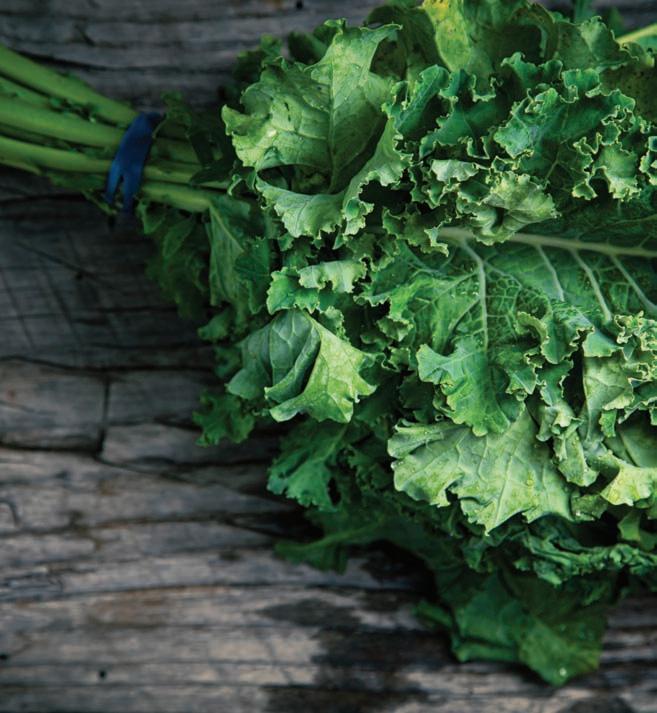


CHINA: Youtiao – a twisted piece of eggy deep-fried dough
FIRST NATIONS: Bannock/fry bread – a flat piece of deepfried dough found in First Nation cultures across North America
JAPAN: Sata andagi – a ballshaped piece of deep-fried dough, similar to a doughnut but without the hole
MEXICO: Churros – A thin colander of deep-fried dough lined with ridges owing to it being piped out of a star-shaped bag














MONGOLIA AND CENTRAL ASIA: Boortsog – a sweet, deep-fried mound of dough
PAKISTAN: Namak pare – deep-fried ribbons of pastry. Often savoury, flavoured with cumin seeds.
POLAND: Chruściki – crispy, fried flat dough sprinkled with confectioner’s sugar
UGANDA/TANZANIA: Mendazi – deep-fried ball or square of flour, water, salt and sugar.

WEST AFRICA: Akara – fried dough made of pea flour


Fry bread or bannock: Songees Food Truck, 254 Belleville St., Victoria
Doughnuts: Frys Bakery, 416 Craigflower Rd.; Yonni’s Doughnuts, 281 Menzies St. (or any Discovery Coffee location); Empire Donuts, 736 View St., Victoria
Churros: Chorizo & Co., 807 Fort St., Victoria
Cronuts: Crust Bakery, 730 Fort St., Victoria



Pierogies: Sült Pierogi Bar, 609 Yates St., Victoria
Vegan doughnuts and cronuts: Niche Vegan Bakery at Planet Organic, The Market on Yates, The Local General Store and other locations.

It is very hard to make fried dough taste truly awful.

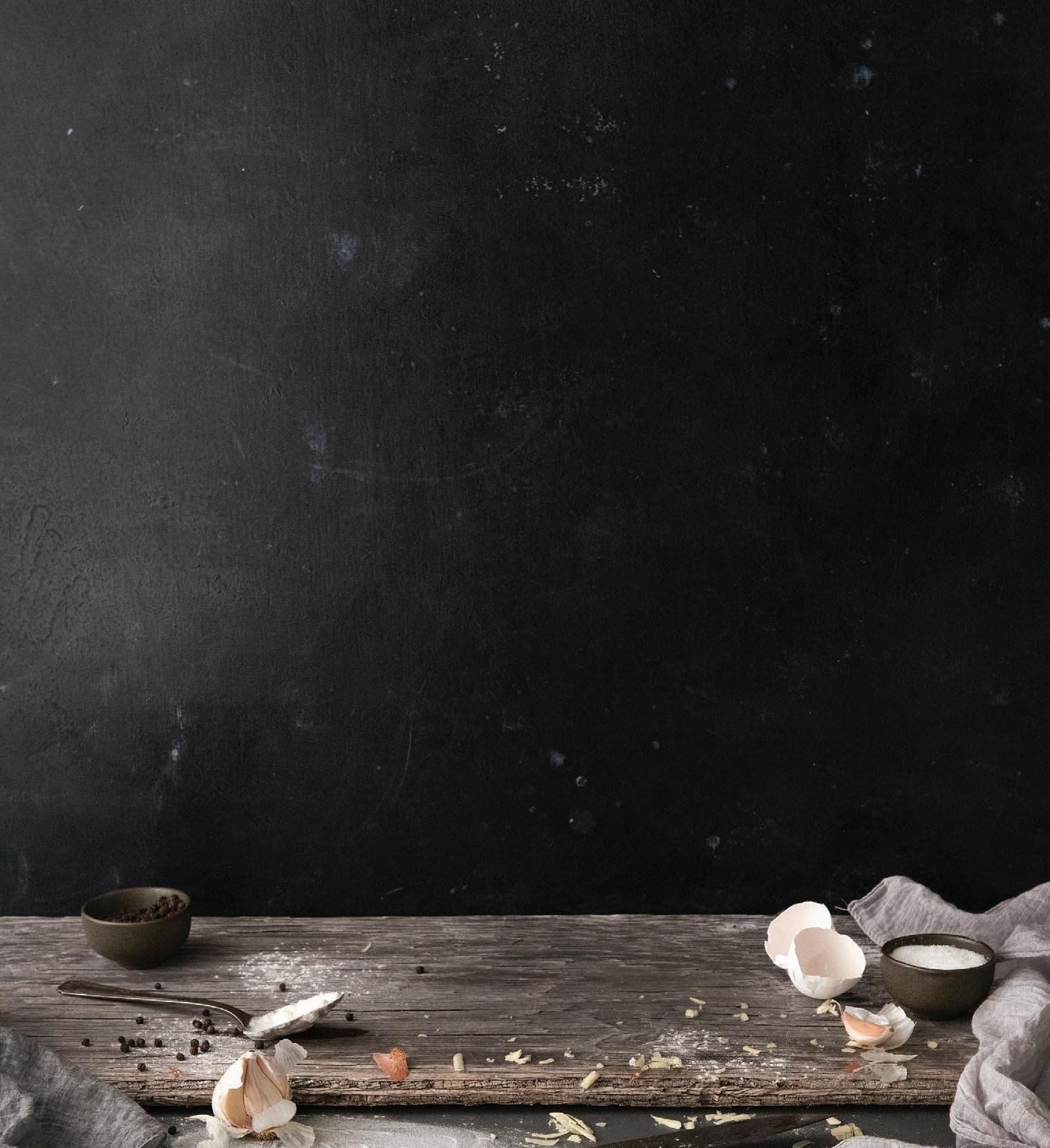












































ACCIO: Owner Mike Rowe
WORDS: Adrien Sala PHOTOGRAPHY: Rebecca Wellman

OK, SURE, SOUPS AND STEWS ARE GREAT, BUT AT THIS POINT CAN WE just be honest and say they’re getting a bit old? When the first whispers of winter rolled in this fall, many of us wrapped up in our coziest clothing and revelled in the opportunity to slow-cook the hell out of fall vegetables and get some much-needed hearty food into our systems. But the preserving and pickling parties have come to an end. Holiday dinners are in the rearview and the kind of cuisine that comes so easily at the beginning of the season is going stale. It’s time to venture into different realms, to pull from faraway dinner tables and sample something different: Thai, Indian, Mexican, Japanese—whatever it takes to get some distance from the Dutch oven for a minute.
The thing is, though, the weather still sucks. And before the arguments about how great the winters are here begin (I know all about them having spent my childhood in Manitoba), can it just be said that it is nonetheless cold and dark and the idea of going out of the house to get something to eat isn’t as appealing as it is in summer? Truth is that despite the winter food fatigue, my inclination is still to lock myself indoors at this time of year, especially around dinnertime. Once inside, it’s very unlikely I’m heading back out.
And therein lies the problem: how does one access the great range of international food options in the city without venturing outdoors?
Victoria has never been a city famous for food delivery. It’s almost a surprise when restaurants deliver, other than pizza or Chinese. But things are changing. In the past number of years, more options have popped up—start-ups and independent services looking to get food to you through a simple phone call, text or online order so you can stay at home and nurture your inner hermit.
The services range in style and approach, everything from daily and weekly food boxes with all ingredients required to make complete meals to delivery companies that will pick up absolutely anything you want (so long as it’s legal) and bring it to your front door. The best one? Well, that depends on your requirements and willingness to part with your money. For some people, the luxury of not venturing beyond the threshold of home is worth every extra penny. For others, the idea is ludicrous. But even for those who don’t want to pay to
play, there are options.
Getting what you want when you want it-ish. Until we can conjure up food with the wave of a wand, there is always going to be a bit of a wait, but these services are doing their best to get food to you as quick as possible. Most of these services deliver to the Greater Victoria Region, with a few exceptions that will go as far as Sidney (best to look on the websites to see). Expect to wait at least 45 minutes though, which isn’t really much to ask if it means not putting on pants.
Accio
Accio is probably the most dynamic home delivery option in the city. They will bring you anything, food or otherwise. Want batteries, a six-pack and some nachos (another wild Friday night)? They’ll get it for you. From 10 a.m. to 10 p.m. every day, Accio delivers to your door with a 10 to 15 percent surcharge on the cost of whatever you order, depending on the deal they’ve struck with individual shops. They also charge a “variable service fee” which is tied to the distance of delivery and number of stops (I ordered food from downtown to be delivered to a location near downtown and it was $7.94 for delivery). The good news is that the prices include the tip too, so you won’t get stung that way when they arrive. The biggest downside? They won’t deliver an Americano and breakfast breakfast bagel with bacon at 7 a.m. Order online and browse their featured shops at myaccio.com or order via text at 250-800-2680.
You’ve probably seen the Dine In cars around town, zipping toward hungry hermits with hot food from different locations. A longtime Victoria service, these guys work with a selection of restaurants, mostly in the sushi, Indian, Thai realms, although not limited to it. They’ll do “most” deliveries for $4.95, making them a pretty decent option if you want food to your door but don’t want to pay a premium. Visit dineinvictoria.com to view their full list of restaurants and place your order at 250-361-DINE (3463).
Something of a newcomer to the food delivery scene, Just Eat is a service available across Canada, serving most major cities (no, you can’t have food delivered to Victoria from Toronto). What makes this option unique is that there are no charges for delivery, other than a tip for the driver should you want

to. They secure relationships with the restaurants who offer them a discount, but they charge you regular price. The savings is how they make their money. The only challenge is that it is still a very limited, with only seven sushi and Chinese restaurants on the list for now. That said, it’s a pretty great option if your favourite restaurant is working with them. Visit just-eat.ca to see what’s on offer and to set up an account.
Perfect if you feel like taking at least some of the responsibility. Meal kits are a growing and going concern, with different services popping up all over North America. This approach does require some preparation and planning on your part, but it can help you avoid grocery store madness. You simply go online, choose your meals and they will deliver all the ingredients to your doorstep. All you’re required to do is reach out and bring it inside, then cook it up (they come with recipes).
Chefs Plate
This service is great for anyone who gets stumped by the question, what’s for dinner? You can choose between a twoperson plan or family plan, each with options for two, three of four recipes per week. You go online and select your meals, which are put together with ingredients from local suppliers and farms, then delivered at the beginning of the following week. The variety is great, everything from pan-seared steak with creamed spinach to cornmeal-crusted chicken and chickpea ragout. It’s a changing menu, but the idea is they deliver everything you need for the meal, save the olive oil and salt and pepper, in a refrigerated box on your doorstep (in case you aren’t home). Then you just whip it up and get eating. It’s all
Friday, December 2nd
5:15pm - Stop at home after work for a minute before heading out to meet a friend for a Friday pint, sit down on the couch and never get back up. Pull shoot on the pint.
6:23pm – Get hungry and attempt to order a caramel chicken from Foo Asian Street Food and discover there is a minimum purchase of $15 for Accio delivery. Add some extra rice to push it over the top. Review the overall cost with surcharge and delivery fee and realize it comes to $25.96. Do a cost benefit analysis and debate with self about the merits of not getting up. Wonder whether this is a turning point in my life in which I become a shut-in. Decide it’s actually rather luxurious and kind of an inexpensive way to pamper myself and then make the order through Accio’s online system while remaining horizontal on the couch watching The Crown.
seasonal and there are vegetarian options. Prices range between $9.75 and $10.95 per serving.
Find out what’s for dinner at chefsplate.com
Local Urban Bites
A Victoria start-up serving the CRD and Sidney, this meal kit plan has two-person, family and school lunch plans. Everything is sourced locally and delivered on a Sunday between 3:30pm and 6:00pm (although there may be some wiggle room there). Started by two local twenty-somethings who go by Alyssa and Corey, this plan has a great range of recipes, from cheese ravioli and garlic toast to vegan Thai red curry (it’s an evolving and changing menu). Get your orders in by midnight on Wednesday to get in on the following week. Prices range from $8.50 to $10.50 per serving, depending on your plan, and are farm fresh.

To get started, visit localurbanbites.com.
Thrifty Foods
Yes, that Thrifty’s. Often overlooked (and not quite a meal kit) the delivery services from Thrifty’s are actually pretty great. The order platform is super-easy to navigate and lets you save previous shopping lists to make it quicker. With a minimum order of $50, you can choose a time slot to have a box (or boxes) of groceries dropped at your door. Anything and everything that is in-store is available, plus they have shrewd shoppers who will ensure you’re not getting ditched with the bruised bananas.
Visit thriftyfoods.com/shop-now to set up an account and get shopping.
6:26pm – Receive text from Accio saying everything has been received and processed and should take about 45 minutes to arrive. Consider the efficiency of this and how most of my friends aren’t even close to this good about communicating plans.
7:04pm – Receive another text from Accio telling me my order should arrive in about four minutes, complete with a link to webpage that shows me in real-time where the delivery vehicle is.
7:05pm to 7:11pm – Watch the little green delivery dot get closer to my house and feel like a high tech spy in his underwear. Put on pants.
7:12pm – Open door just before delivery driver knocks. Exchange very brief pleasantries and take food without having to provide a card or tips because it’s already taken care of, close door, return to couch with food and sign off for the evening.
Main Thoughts?
It’s definitely a great service. The fact that it took just over 45 minutes on a Friday night, right in the busiest time slot is great. The cost was a bit high for a single person, but mostly because of the delivery fee. Next time I’m with another person or group of people, I will definitely use the service again, but aim to make the order significant in the hopes of bringing down the per item cost. All up, I like it. —AS
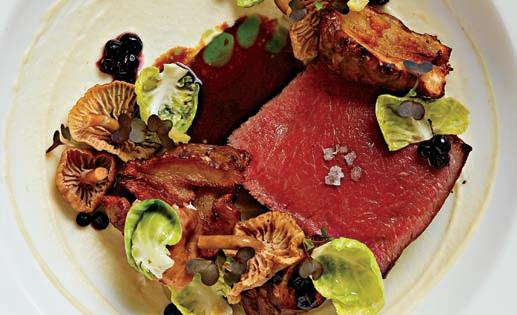
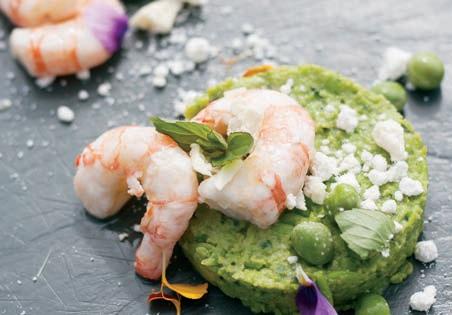
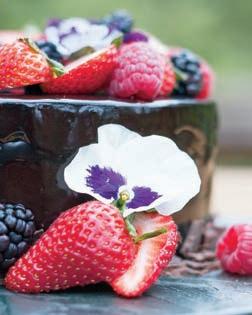




















Creative chefs give the soothing, familiar flavours of childhood an upgrade.

FICTIONAL TV NERD SHELDON COOPER MAY have ageniusIQ, but what really makes him happy is a plate of “spaghetti with little hot dogs.”
You likely have your own guilty childhood pleasures— memories of pop tarts for breakfast, cheap college dinners of instant noodles or mac-and-cheese, even gooey Twinkies in your school lunchbox. And thanks to creative chefs, you can enjoy them all again. While the classy comfort food movement may have started with $50 gourmet hamburgers topped with foie gras, applying artisan skill to everyday dishes is more popular than ever. According to industry trend trackers, millennial diners are fast-casual connoisseurs who care about food quality and provenance. They dine out regularly and like “flat agers”—those fit, fun-loving Boomers (aka “flatties”) who came of age in the ’60s, ’70s and ’80s —are driving the push for better casual cooking.
So it may be that perfect storm of savvy old and young consumers that’s behind our new obsession with quality comforts here in Victoria. Channelling our nostalgia for both home cooking and childhood treats is at the heart of every comfort food menu, whether your craving is a lobster roll or a sticky toffee pudding, a classic chicken curry or a Nanaimo bar. We all have foods that evoke strong feelings, and chefs bring their own memories to the table, improving and updating everyday foods, even taking industrial eats into gourmet territory.
For chef Jason Clifford, it’s his mom’s homemade antipasto—that retro relish of olives and canned tuna to scoop up with crackers—that stirs memories of home. At Victoria’s Table 21, he conjures that nostalgic appetizer with his own Tuna Antipasto to share, a chunky relish of tomato, artichoke and olives that’s artfully plated over thin slices of rare, seared tuna.
“I’m not the only one who grew up eating antipasto, so hopefully when you eat my version, you’ll think, ‘Ya, this reminds me of my childhood,’” says Clifford of his artisan take on this vintage pantry staple. “I want to cook what makes me happy.”
That means creating old favourites “just like you remember them, but even more delicious,” like his slowbraised short ribs, reminiscent of a Sunday pot roast, but cooked for hours in Zinfandel and served with white Cheddar grits and caramelized onions. “There are no caviars or foams on my dishes—my Mom was a great cook and I want to stir up those food memories,” he says. But even “junk food” can get a gourmet makeover. Clifford likes the whimsy of recreating vintage junk food from scratch at Table 21, like the housemade Ho Hos on
his dessert menu. “My mom used to put them in my lunch box,” he says. “Our version is still a Swiss Roll, but we make it with good chocolate and real whipped cream and grind our own almond flour for the sponge cake.”
Crossing the border we find many examples of redesigned retro comfort foods. In Portland, where the hipster food scene is all about fun, you’ll find upscale peanut butter and jelly sandwiches and Mole Tater Tots at Bunk, and a sweet, spicy Indian-style Cracker Jack from Masala Pop.
Whiz” appetizer. Recreating vintage, childhood favourites is his specialty.
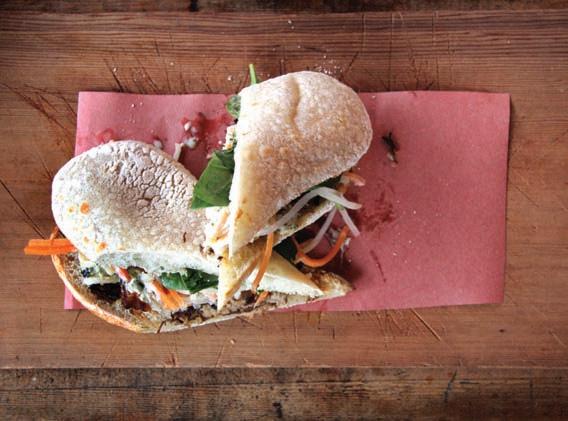
“That’s our jam here,” he says. “People are attracted to foods they ate as kids.”
Chalmers’ artisan attitude extends to making his own pickles (for tempura fried pickles), the Redneck Charcuterie Board (think housemade bologna, Cheese Whiz and Spam-infused chicken liver mousse), or sous vide meatloaf with cheese curd mash. He also elevates that college staple—all-you-can-eat wing night—with spicy duck wings, flavoured with his own hot sauces for his Buck-a-Duck Thursdays, and updated versions of fast food classics on Big Shiny Sundays (the weekly “’90s Night.”)
“Why do we do it? Because we can,” chuckles Chalmers. Like the other sausages he makes from scratch for the menu, his housemade bologna (a beefy, smoked version of classic mortadella) is also popular on the Fried Bologna Po’Boy sandwich.
“Our bologna is served cold on the charcuterie board, with sweet pickles and French’s mustard,” says Chalmers, “and we fry it up on the griddle for the sandwiches. People have a lot of fun with it.”
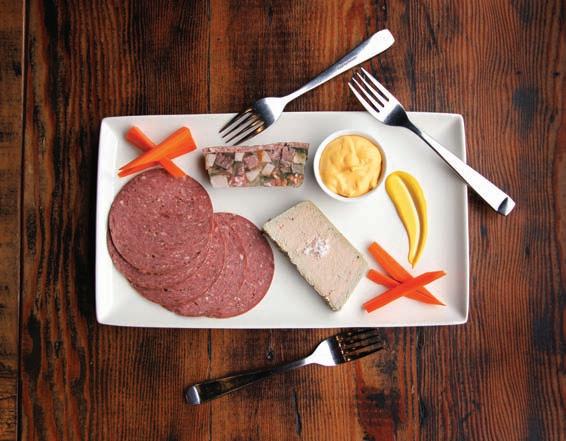
Cooking with sodas is classic old school, too. Remember the Sunday hams glazed with cola? American celebrity chef Paula Deen has made it, along with other retro classics like cheeseburger casserole and vanilla pudding Twinkie Pie, central to her retro repertoire. Here in Victoria, chefs are riffing on the same idea using locally made Intergalactic Root beer, brewed with natural herbs and spices by Phillips Soda Works.
The trendy Juniper, in Vancouver’s Chinatown neighbourhood uses Phillips Root Beer to glaze its housemade beef jerky, and at Wheelies Motorcycle Café in Victoria, chef Kai Musseau braises the tender pulled pork for his popular sandwich for 15 hours in a Phillips soda. There’s also root-beer-braised pork for both sandwiches and Pulled Pork Tacos, and Phillips Roor Beer Barbecue Sauce Wings, at Darcy’s Pub downtown.
You may remember slathering Cheez Whiz on celery sticks or pouring it, hot, over nachos, but at Victoria’s North 48, chef Sam Chalmers takes this everyday supermarket staple to new heights, making a creamy Cheddar spread from scratch that has all of the cheesy flavour but none of the artificial ingredients. “That was one of my finest accidents,” says Chalmers of his “Cheese
Musseau also stirs up childhood memories with his aged white Cheddar Mac ’n Cheese and an ice cream sandwich of seasonal ice cream in a chocolate fudge brownie with maple candied pecans, both perfect foils to the funky biker café with its vintage choppers and Easy Rider atmosphere.
Candy will always take us back to a simpler time. On a recent trip to Montreal, I encountered homemade caramel corn with chunks of sponge toffee in the mix,
and a Mars Bar baked into a French pastry with a rhubarb and candied tomato compote at a popular champagne bar.
It’s a nod to the deep-fried Mars Bar popularized in Scottish chippys. Today you’ll also see mini Mars Bars fried in panko crumb crusts and plated in trendy trios with burnt caramel cream in top Edinburgh eateries.
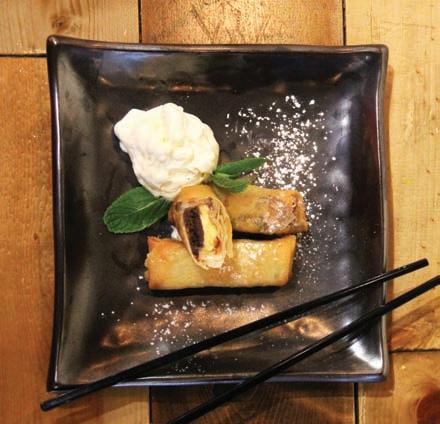
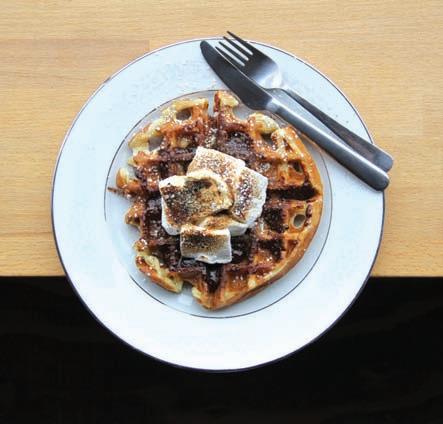
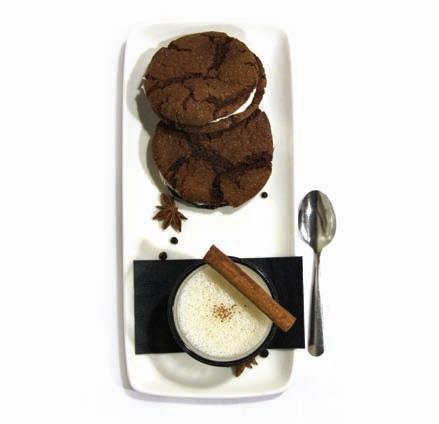
These sweets aren’t exactly healthy, but like artisan ice cream and doughnuts, they all gain cachet when locally made in small batches. At Cold Comfort, Autumn Maxwell appeals to the kid in all of us with her adult-style ice cream sandwiches. Her gourmet ice creams sandwiched between creative cookies are miles beyond the bland supermarket and fast food versions,
Combinations fluctuate with seasons and inspirations, but there are several ice cream sandwiches on the regular menu at Cold Comfort’s Fernwood shop. Think Salted Caramel Ice Cream with Graham Crumb Cookies, Hoyne’s Dark Matter Ale and Vanilla Ice Cream in vanilla macaroons, or dairy-free Hot Chocolate ice cream sandwiched between a gluten-free cocoa, almond flour and meringue dacquoise. Maxwell’s massive
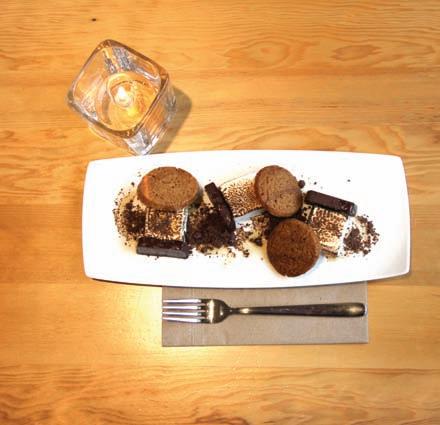
flavour archive also includes many nostalgic creations, whether it’s Cotton Candy, Malted Milk with Maltesers, Mint and Girl Guide Cookies, or PB&J (peanut butter ice cream with grape sorbet).

At Ruth & Dean, downtown on Douglas St., Susannah Ruth Bryan channels her childhood with the classic Birthday Cake—a Swiss chocolate cake layered with vanilla butter cream and topped with coloured sprinkles, reminiscent of birthday parties on the block.
“My mom made grammy’s chocolate cake with white icing for every birthday—and there were seven kids in my family, so we ate it a lot,” says Bryan, explaining her four-layer upgrade of that tradition.
She’s also turned her better baking skills to that 1950s treat, the Nanaimo Bar, elevating the Island sweet beyond the everyday. “Mine are all about the centre—the yellow part,” she says of her take on the creamy, custardy chocolate square. “We changed the ratio, tripled the filling, and topped them with bittersweet chocolate. There are a lot of closet Nanaimo Bar lovers.”

Which may be why tourists now flock to Nanaimo to taste the mom-made confection. The city’s Nanaimo Bar Trail map lists 30+ spots where you can taste variations on the theme: Peanut Butter Crunch Nanaimo Bars at Hearthstone Artisan Bakery, Nanaimo Bar martinis at The Grand Hotel made with chocolate vodka from Campbell River’s Shelter Point Distillery, Nanaimo Bar Spring Rolls at the Noodlebox and, in the UK tradition, Nanaimo bars deep-fried in a cinnamon batter at Pirate Chips.
S’mores are another gooey campfire treat that has chefs channelling their summer camp memories. At Victoria’s The Livet, an artisan take on the S’more pairs housemade graham cookies with maple marshmallow and chocolate crunch. And at Little Jumbo, you might find a creamy dark chocolate S’more brûlée on the dessert menu, alongside their take on old-fashioned cookies and milk: ginger snaps with rosemary butter cream and warmed almond milk chai.
Back at North 48, there’s a DIY S’more dessert—homemade marshmallows, dark chocolate sauce and a tabletop canned heat “fire” to toast them to blackened perfection. And at Hide + Seek Café in Oak Bay, you can have a S’more waffle topped with toasty marshmallows and drizzled with chocolate sauce as well as other kid-friendly creations like toast slathered in their own chocolate and hazelnut “Nutella” or iced apple pop tarts made in-house.
Nostalgia looms large on menus of all kinds, but familiar flavours are also an important touchstone in modern molecular cooking.
Playing with familiar foods using modernist techniques is at the core of molecular gastronomy, combining cooking and chemistry in imaginative ways. Ingredients are morphed and manipulated to create a trick for the eyes and a surprise for the palate— ethereal foams with unexpected flavours, colourful pearls that burst in your mouth, crispy dehydrated powders and “soil” garnishes. Plates such as these veer beyond sustenance into performance art.
And while all of this culinary showmanship is impressive, it can fall flat if diners can’t relate to the results. So the most successful modernist chefs deliver something both innovative and broadly familiar—a take on a childhood favourite like gelled tomato “spaghetti” with cheese and basil “caviar” (pearls) or a bite of foie gras encased in cotton candy (no, it’s not pink).
The molecular movement has given chefs license to play with their menus and our memories, but it may be the comfort of our mothers, not their cooking, that we desire. I mean, who really yearns for those nights when fried bologna was the only choice for dinner?
Still, scientists know that both aromas and flavours can trigger intense emotional memories. Like the finale of the animated film Ratatouille when the critic finally tastes the eponymous dish, a food memory can whisk you back to a happy childhood moment in an instant. It’s a universal and mysterious involuntary response—comforting, familiar flavours can unleash the inner child in anyone.
CANADA’S ONLY VODKA, GIN AND LIQUEURS, FERMENTED AND DISTILLED FROM HONEY.

At Hide + Seek Café in Oak Bay, you can have a S’more waffle topped with toasty marshmallows and drizzled with chocolate sauce.”
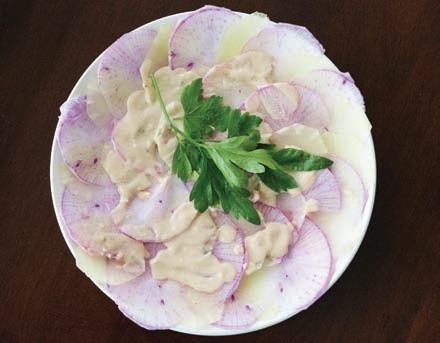

SEBASTIAN FABBRO IS A PHYSICIST WITH a special focus on cosmology and the dark energy that makes up 70 percent of the universe. He’s also a passionate cook and a superb host. His dinner parties are thoughtfully conceived, multi-course feasts.
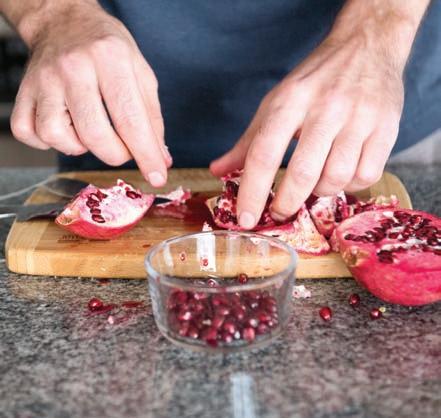
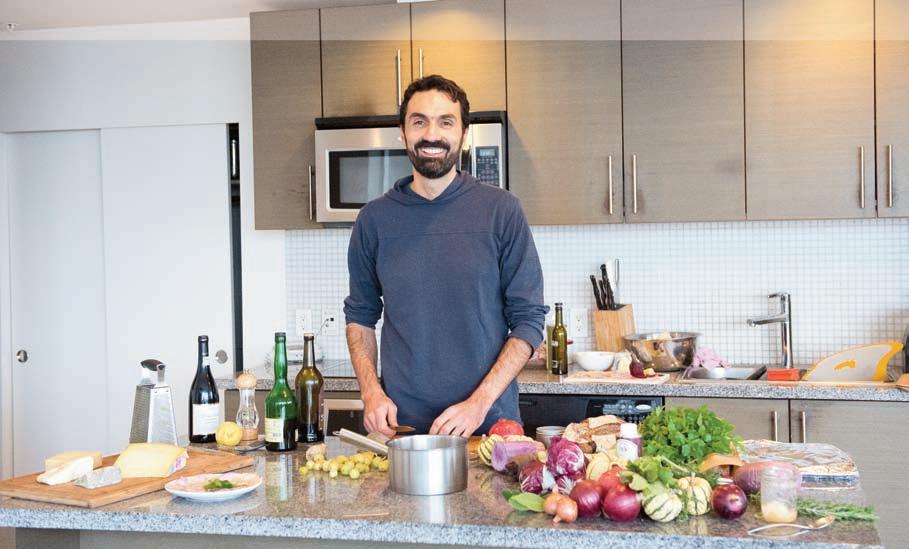
“I probably shouldn’t say this, but I hate potlucks!” the tall, lanky, 44-year-old growls under his breath when we visit recently at Fol Epi below the Dockside Green condo he shares with Susana Duarte, a Portuguese-educated lawyer.
“I like cohesive meals. In fact, what I love is to spend a full day together with friends, thinking about a cohesive meal,
buying ingredients together, cooking together and socializing while we’re talking about food and working. It’s a blast!”
Fabbro is from Lyon, arguably the most food-obsessed city in food-obsessed France. His family’s roots are in the hills and mountains not far from Lyon, and those roots inspire his love of cheese. I’ve observed his local cheese purchasing first hand: Fabbro longingly, and at length, staring at the cheese counter and studying the offerings at Ottavio’s before making his choices.
“I’m a cheese connoisseur. Even when we go backcountry skiing, I’ll prepare the cheese in advance so we can enjoy fondue up in the snow with some nice wine.” His weekly shopping habits include visits to Fol Epi and Fry’s for bread, charcuterie from Choux Charcuterie, Ottavio and Whole Beast. He loves Village Butcher’s beef offerings and gets his produce from the farms that supply The Local Food Box in Metchosin, including fresh vegetables and fruit, lamb, chicken and pork. He also has local sources for duck and rabbit, two of his favourite meats.
“It takes a lot of time and effort to buy good ingredients, and I also gather mushrooms in the fall. I love pine mushrooms with an Asian broth or simply grilled with Parmesan. Chanterelles, porcini, cauliflower mushrooms and hedgehog mushrooms are all coming now,” Fabbro says, dark eyes flashing. “Hedgehog mushrooms are
really subtle flavoured, and I like to mix them with seafood like scallops in a French-style reduction sauce with fresh herbs from my rooftop garden. I’ve got crab traps that keep me busy, and I like to pick mussels and oysters too. I like to make bacalao every couple of weeks. I get the salt cod from Maria’s Deli and soak it for three days, changing the water and preparing it for cooking. Some fancy-style cooking takes more time and is a lot of work. I’ll spend a day shopping and another day preparing the meal.”
Fabbro studied at Grenoble and UCLA, then Paris and Berkeley. He was part of a team of physicists whose decade-long study of accelerated expansion of the universe garnered the Nobel Prize in 2011 and a trip to Sweden for Fabbro and partner Susana. Since 2009, he has worked at Herzberg Astronomy and Astrophysics, riding his bicycle out West Saanich Road Monday through Friday to work. He cooks dinner nightly for Susana and for guests on the weekend.
“When I ride home from work, I’m tired. I sit down for a few minutes, but it is important not to compromise in the
kitchen. Freshness is very important. I’m much more spontaneous in my daily cooking now, not so hung-up on details. I don’t follow recipes, so Susana does most of our dessert baking when we have guests, and she takes care of table setting too.”
“We host dinner parties every couple of weeks. We used to do it more often when we lived in Portugal for seven years. Our parties in Lisbon and the Algarve were more spontaneous. I’m not really good at planning social events, and I was used to friends just coming over.”
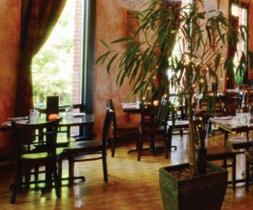

kebabs were cooked so slowly, slowly, so ahh ….” Travel, he says, is great for learning about food. “We have a small kitchen, but my sister-in-law’s kitchen in Hong Kong is really small, and she produces beautiful cooking in that small space.”
Here at home, Fabbro enjoys making meals with Vancouver Island food, fresh ingredients such as sardines, herring, barnacles, wild plants and deer. “I’d love to open a restaurant that just served truly local food.”
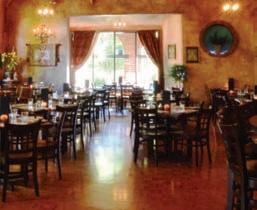

The couple are looking for a new home

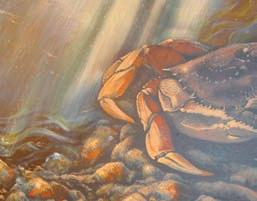

The couple’s Dockside Green condo is about 1,000 square feet with a small kitchen and a connected, open-plan dining room that seats eight comfortably.
“We’ve had 20 people, but if there are more than eight guests, I’ll often go to one of their homes and cook. What I prepare depends on our guests and what they like,” Fabbro explains. “If I don’t know them well, I go back to my roots ... but French cooking is expensive!”
Last summer my wife and I shared a meal with the couple and Susana’s mother during her visit from Portugal. Fabbro cooked a Portuguese-style stew. He likes making seafood stews but loves raw oysters, sashimi-style fish and ceviche. He’s discovered wild salmon since moving to Canada and likes using blueberries and salal berries with the fish.
“Canadians like sweet tastes, so I’ll use cranberries and apples with salad sometimes. It hurts me, but I’ll do it,” Sebastian jokes before adding a rapturous description of Lyonnaise salad with its “little-bit-more-than-poached egg, bits of lardo, goose or duck neck and heart ... those big, curly salad leaves, a little bitter. Lately, I’m really enjoying Middle-Eastern food too, Lebanese dishes and the use of pistachios, cardamom, combinations of spices, pomegranate—such a vibrant thing— and cooking meat slowly, slowly, slowly. “I had kebabs in Central Asia on my travels, and it was amazing! Their
in Victoria where he can relive some of his favourite European memories. “A group of guys—six to eight friends— would get together and cook. We’d have lots of drinks and spend all day and a long evening eating and socializing. I like long-table-style, and I really like fire-based things and playing with smoke. Fire is beautiful,” he enthuses.
“We both like prepping the fire. In Portugal, Susana’s family always had a little fire and a room where chorizo and other meats were drying. I want to build a wood-fired oven in our new home. We had a pig roast outside this summer, but I want to bake bread and pizza with a wood-fired stove.
“My parents would play music, play instruments, as part of an evening’s dining. The newer generations are less musical, generally. We don’t think about playing instruments with a meal. I might match recorded music to a meal’s theme. For example, with a Moroccan dish like pigeon pie or a Portuguesethemed meal, but that’s unusual.

“Guests often like cooking with me, and I love it. It’s a full day of fun. But too often, my guests are intimidated, and people don’t invite us to their house for a meal. They think they have to return the effort that I put into my multicourse dinners, but I’m happy to be offered pizza and beer while watching a football game and socializing with friends. Getting together is the important thing. Getting together and talking and enjoying each other’s company.”



“GETTING TOGETHER AND TALKING AND ENJOYING EACH OTHER’S COMPANY.”

2. Every. Single. Other. Recipe.
by Rebecca Baugniet“Oh my goodness, where to begin?” That is the question you will be asking yourself when you flip through British Columbia from Scratch for the first time. Divided into seasonal sections, this cookbook inspires you to make the most of the incredible ingredients available to us here in BC with unintimidating recipes that promise impressive results.
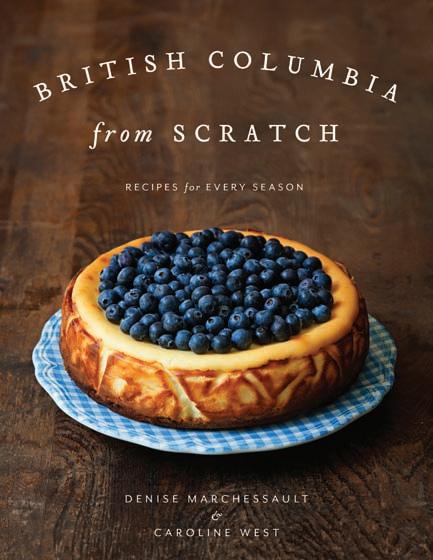
3. The writing
This book is not just a pleasure to cook from and to look at, it is also a joy to read. Denise is, without a doubt, a natural writer. There is humour (see the description for the frosted cranberry jellies on page 214), there is gentle coaching backed by years of experience, and most refreshingly, the prose is delightful. “I learned to get up close and personal with seafood at culinary school. I was taught to bring fish to my nose to inhale its mild – not fishy – sea-breeze aroma, and to test its body with my fingertips for a firm, springy resistance and tightly knit scales. I learned to lift the flaps on both sides of the head to examine the colour of the gills (they should be pinkish-red, rather than grey) and to look the fish in the eye to establish its worth (clear is fresh, cloudy is not).”
Is that not the most beautiful description of fish selection you have ever laid eyes on? Don’t you want to read a food memoir written by Denise now? I do.
step into the foreground, offering a strong sense of place and reminding us of the great beauty that surrounds us, and the ingredients we use every day. Tragically, this talented photographer’s life was cut short by cancer just days after this book’s release. British Columbia from Scratch is a testament to Caroline West’s incredible creative spirit and skill as a photographer.
5. It will make you fall in love with BC (again)
In conversation with Denise a few days ago, she told me that the best compliment she’d had about the book so far was from someone who’d written that “it made them proud to be from BC”. That was the essence, she said, that she and Caroline were trying to capture, and they certainly succeeded. The endpapers of the book are made from a vintage map of BC with typewriter-typed tags pinned on important locations depicted in the book; cherries at Summerland, oysters at Mudge Island, halibut at Port Renfrew… The book is a true celebration of our province’s bounty and it makes you happy and grateful, to call BC home.
6. The fundamentals chapter
1. The Gougères
“I’m here for the gougères,” I heard one woman announce unapologetically as she arrived at the book signing at Cook Culture in Victoria. If you ever attended a class at Denise Marchessault’s cooking school, French Mint, you know what she’s talking about. Each class started with warm cheese puffs being pulled from the oven and offered around the kitchen. If you’ve also been missing these, or if you want to discover the perfect recipe for this classic hors d’oeuvre, it is there on page 184.
4. The photography
I’m supposed to be writing but my eyes keep drifting away from the computer screen to an open page of British Columbia from Scratch. The cookbook is open to a photograph of apricot pavlovas and I’m thinking I’d rather be baking (or eating). The photo – all light and crispy meringue and soft whipped cream and sunsetorange luscious apricots is making me salivate. Indeed, mouth-watering food photographs take centre stage on most pages but occasionally retreat to let landscapes
Denise starts this chapter off saying “If you want to become a better cook, start from scratch. Master the fundamentals and your cooking skills will soar.” This is a generous chapter filled with accessible recipes, helpful tips and photographs that are not just beautiful but also useful in that they illustrate something that Denise is describing in the text. I particularly love the two page spread illustrating the difference between soft, medium, firm and hard boiled eggs, each half egg sitting in a lovely retro egg cup with the correct cooking time written above. If you’ve been wanting a reliable go-to source for clear instruction on classic techniques, this is the book.
7. The friendship
In a heartfelt tribute to Caroline shortly after her death, Denise wrote how grateful she was to have a “tangible
testament of their friendship and joyful collaboration.” This friendship and joyful collaboration is strongly felt throughout the book, for instance, under the dream-like image of pear soufflés, captured just as they were beginning to sink: “Despite the speed with which the soufflés were dispatched from the oven to the camera, they started their inevitable collapse before Caroline could photograph them at their loftiest height. We cursed their descent, then Caroline sighed and said, “Well, they’re real, Denise.” Real is what we went with.” Denise tells me that this was a gift Caroline gave her – helping her let go of that ever-present quest for perfection and embrace the “real”. Other friendships are hinted at throughout the book – loyal recipe testers, cooking school helpers and guest chefs. You can tell that this book was made by people who love food and love sharing food with others. The result is a cookbook that will inspire you to feed your own friendships.
A Taste of Haida Gwaii
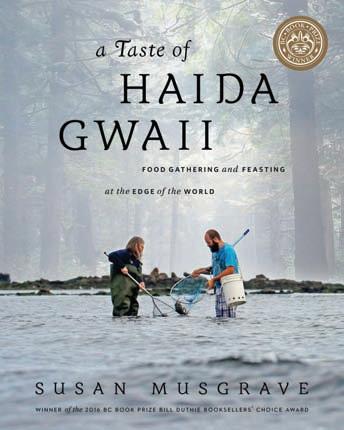

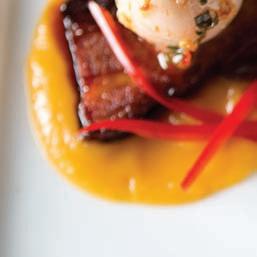
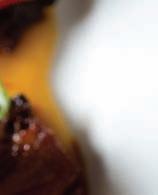
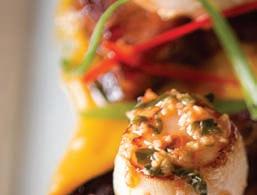 by Susan Musgrave Whitecap,
by Susan Musgrave Whitecap,
ISBN 9781770502161



Remote Haida Gwaii, with its rich history, abundant wildlife, and seas brimming with ingredients, holds a fascination for British Columbians. We dream of a pristine environment, food that is clean and pure and a close camaraderie that comes from adhering to a self-sufficient life. Author Susan Musgrave, an eccentric writer, poet, and sometimes food writer, takes that journey for us. Interspersed with recipes such as seaweed lasagna, smoked salmon with spruce tips, and cloudberry moonlight cream, Musgrave tells short stories about her life on the archipelago, her childhood, local lore, and the many unique foodstuffs found in the area.
A Taste of Haida Gwaii: Food Gathering and Feasting at the Edge of the World is the next best thing to moving to Masset. You will be inspired and satisfied. So sit back and enjoy the ride.
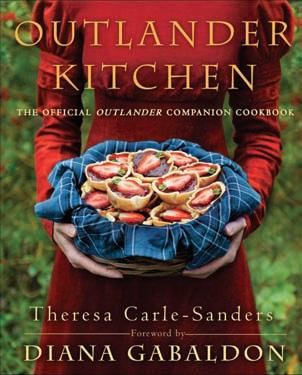
Outlander Kitchen
By Theresa Carle-SandersPhotography by Rebecca Wellman Random House Publishing, ISBN 9781101967577
Victoria’s own Rebecca Wellman, a freelance professional photographer (full disclosure Wellman shoots for EAT), teamed up with Pender Island writer Teresa Carle-Sanders to produce the beautiful Outlander Kitchen: The Official Outlander Companion Cookbook to the runaway popular TV series. Wellman has written an account of her experience that you can find online at: eatmagazine.ca/an-insiders-view-of-theoutlander-kitchen-cookbook/

southern France. Rather than being dominated by cool notes of citrus and apple their wines tend to exude sunkissed nuances such as peach, melon and apricot and even tropical flavours of pineapple, banana and mango. Chardonnay is a classic example of how a grape variety becomes more generous in character the warmer the climate gets, and winter is the ideal time to develop an appreciation for its lushest expressions.
Other grapes are always generous by nature and require plenty of warmth to show their lavish best. The Rhône Valley and southern France are home to heady and plump gems such as Viognier, Grenache Blanc and Marsanne, where they may show up on their own or giving body to blends. So charming are these that they have been planted abroad in similar climates, particularly in California and Australia.
Even regions deemed cooler can provide whites with opulence. Alsace in particular typically enjoys sunny weather well into the fall, allowing grapes to slowly build up incredible richness and density as well as complex flavours. Here Pinot Gris reaches its most sumptuous expression, and Gewürztraminer is the epitome of its exotic, full-flavoured nature.
Then there is Sémillon, which may be skinny in its youth but puts on weight as it ages. Australia’s Hunter Valley offers a palpable example of this. The wines also take on honeyed, nutty nuances that come with bottle age. Alternatively, look for premium bottlings of white Bordeaux. In these, Sémillon gives some bulk to Sauvignon Blanc when the two are blended together, while aging in new oak barrels adds further dimension and heft.
IT’S COLD, RAINY AND DARK. There may even be some occasional snow. ’Tis the season of hibernation. The wintery elements drive us inside and encourage cocooning at home. As a hearty stew simmers away on the stove, the natural tendency is to throw on a warm sweater and cozy up by the fire with a glass of robust, full-bodied red.
While reaching into the fridge to crack a white may seem counter-intuitive, you don’t need to rule this out altogether. It’s understandable if your cravings for light and refreshing Pinot Grigio or crisp and cooling Sauvignon Blanc have temporarily disappeared. Those summer staples may simply not appeal when it’s blustery outside. But there’s a world of whites beyond your fair-weather friends that are perfectly adept at
countering the frosty conditions. They’ll also save you from monochrome boredom, which can set in after sipping strictly red for months on end.
Whites that satisfy the winter palate come in many guises. Rich and weighty wines are particularly pleasing when the temperature drops. Both alcohol and oak contribute to body, giving the wine substance. Equally, a caressing texture provides the sensation of a warm embrace. Think fleshy and unctuous rather than lean and steely.
Warm climates offer ample hunting ground for fullerbodied wines with ripe fruit flavours. As a starting point, look to balmier regions within Chile, Argentina, Australia and South Africa as well as California and
And while you’re protecting yourself from the elements of the outdoors, don’t forgo adventure. This is the opportunity to explore whites you haven’t tried before. Trebbiano Spoletino from Umbria in Italy, Petit and Gros Manseng from France’s southwest and Encruzado from the Dão region of Portugal all possess ample substance for winter drinking.
These winter-friendly whites are easily partnered with cold weather fare. They’ll stand up to roasted chicken, pork and creamy pasta sauces. They are equally appropriate with richer seafood dishes, squash concoctions and vegetable gratin. The most aromatic, like Viognier and Gewürztraminer, are handy when exotic ingredients come in to play in a Thai or Indian curry (as
long as the spicy heat is kept mild). And if you’re just looking for a wine to accompany buttery popcorn during your next in-house Netflix marathon, a creamy oaked Chardonnay or Chenin Blanc will do the trick.
Adding to their winter appeal, rich full whites don’t need to be chilled as much as their lighter-bodied brethren. If you happen to be checking with a thermometer, the rule of thumb is 10-13°C for full-




bodied whites. To find the ideal temperature, take the bottle out of the fridge for a bit prior to enjoying or nurse the wine slowly in the glass, allowing it to warm up. If you’re paying attention to each sip, you’ll likely notice how much more expressive it becomes as it loses its chill. This winter do not fear foraging for wine in the fridge. Once you open the bottle and pour it into your glass, you may even find that winter white can be warming.
2015 BLACK HILLS ESTATE WINERY, VIOGNIER, OKANAGAN VALLEY BC VQA, $22-25*

The southern Okanagan enjoys enough golden rays for Black Hills to champion this sunloving Rhône variety. The result is a luscious white with peaches in syrup, preserved mandarin and fragrant flowers. A unique match with curried squash soup.
2014 LOUIS BERNARD CÔTES-DU-RHÔNE BLANC AOC, FRANCE, $14-15
Grenache Blanc provides plenty of plush fruit while Bourboulenc and Clairette keep it vibrant and juicy. Subtly floral with ripe stone fruit as well as a hint of dried herbs, this affordable white is a treat with roast chicken with thyme.
2015 D'ARENBERG, ‘THE HERMIT CRAB’ VIOGNIER MARSANNE, MCLAREN VALE, AUSTRALIA, $18-20


Honeysuckle, baked apricot and sweet spice aromas follow through on a voluptuous and honeyed palate. The Hermit Crab is richly textured but well-made and balanced. A crowd pleaser and a great pairing with pork.
2014 DEMORGENZON, ‘DMZ’ CHARDONNAY, WESTERN CAPE, CHARDONNAY, SOUTH AFRICA, $19-21

Tons of pleasantly plump fruit framed by integrated oak in this mouthful of melon, vanilla and toasted cashews. Approachable, friendly and familiarly comforting. A worthy companion for potato gratin
2007 MOUNT PLEASANT, ‘ELIZABETH’ SEMILLON, HUNTER VALLEY, AUSTRALIA, $21-23


Released after extended bottle aging, the Mountain Pleasant is a fabulous example of Hunter Valley’s unique style of Sémillon. Lime zest meets honey on buttered toast and the finish is long and nutty. Works well with smoked fish.
2015 DOMAINE LAFAGE, ‘CUVÉE CENTENAIRE’ CÔTES DU ROUSSILLON AOP, FRANCE, $22-24
From the far south of France, this mouth-filling blend of 100-year-old Grenache Gris, Grenache Blanc and Roussanne is an intriguing tangle of acacia, fennel, white peach and crystalized lemon. Would hold its own next to veal.
2013 ODÉ D'AYDIE, PACHERENC DU VIC BILH AOC SEC, FRANCE, $28-30*
A blend of southwestern France’s local grapes Petit Manseng and Gros Manseng. Aromas of apricot, baked pear and apple pie are joined by flavours of almond and grapefruit on the palate. Mouth-coating and pleasantly warming alcohol (14.5%) but plenty of acidity to keep it from being heavy. Perfect for a creamy seafood concoction.
2014 CHAMPALOU, VOUVRAY AOC, FRANCE, $31-33*
There is just something about the texture and concentration of flavours in this 100% Chenin Blanc that make it a lovely cool weather sipper. Nuances of hay, meadow blossoms, pear and quince lead to a lemony finish. Snuggle up by the fireplace and enjoy a glass while nibbling on a selection of cheeses.
2014 ANTONELLI, ‘TREBIUM’ TREBBIANO SPOLETINO, SPOLETO DOC, $33-35*
Italy’s idyllic Umbria region offers a number of intriguing native grapes, but Trebbiano Spoletino has to be its finest. And Antonelli’s produces one of the best examples. Smooth and layered with lemon crème brûlée, ginger, mineral and succulent tropical fruit. A no-brainer with a cream-based pasta dish.
Prices exclusive of taxes. *Private wine stores only. All other wines available at BC Liquor Stores.


BLUE GROUSE PINOT GRIS 2015


VANCOUVER ISLAND $20-25
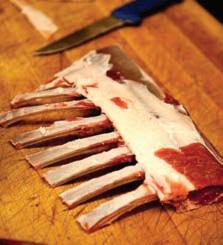
With a production of a scant 300 cases a year it would not surprise me if this wine were all but sold out at the winery. Having said that, there is a good chance a few bottles can still be found on private liquor store shelves. It is definitely worth the effort to hunt down. Very fresh with good intensity and racy acidity. Citrusy with floral, mineral and honey nuances, nicely balanced with a clean crisp finish.
HESTER CREEK PINOT BLANC 2015
OKANAGAN $18-21
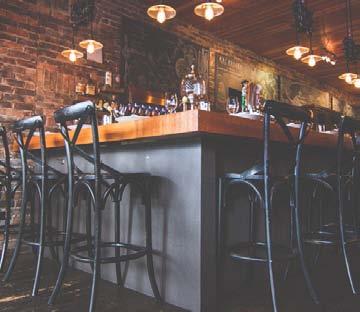
British Columbia is well known for the quality of its fruit and this perky little white from the south Okanagan shows it off perfectly, each sip is an explosion of vibrant citrus, apple and peach flavours. Straight forward, refreshing and absolutely delicious with crisp acidity and a lovely clean finish.
WYNNS COONAWARRA RIESLING 2015

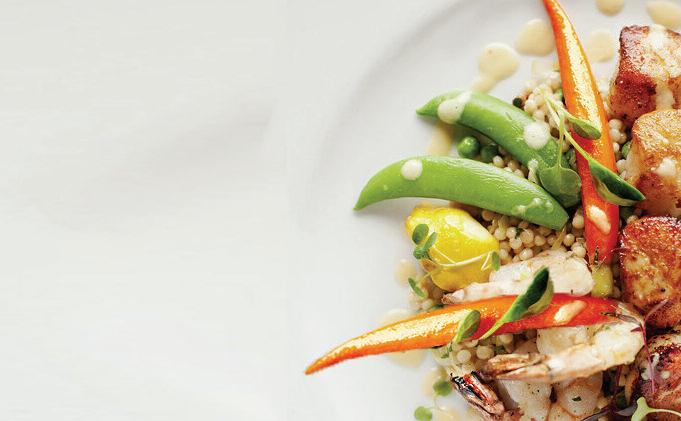
AUSTRALIA $16-18
Not the first variety to come to mind when I think of Coonawarra but given the quality of this Riesling maybe its time for a rethink. Bright and lively, with heady citrus, mineral and white honey aromas. Slightly viscous on the palate with ripe apricot, citrus and mineral flavours, soft acidity and lovely balance.
REICHSTRAT VON BUHL ARMAND
RIESLING KABINETT PFALZ 2013
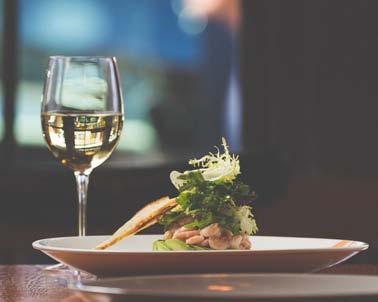
GERMANY $21-24
Family owned and certified organic, Reichstrat Von Buhl was founded in 1849 and is considered one of the finest estates in Germany. The Armand Riesling with a whopping 8% alcohol is classified as a Kabinett wine but comes across more like an Auslese in weight and concentration. Very intense with pronounced apricot, honey and slate aromas, a slightly oily texture with ripe fruit flavours, refreshing acidity and tremendous length.

PASSAMANTE SALICE SALENTINO 2014
ITALY $21-24
Alora! There is nothing refined about this spicy Negroamaro. As the name implies, it is dark and slightly bitter. What the name does not prepare you for is the intensity of the nose, the juiciness of the fruit and the power of the tannin. This robust red from the dusty vineyards of the Salento Peninsula is not for the faint of heart, the weak and infirm or those with a genteel palate. It is robust and chewy with sun kissed fruit flavours and an earthy fecundity, acidity front and forward
and a veneer of firm but well-integrated tannins that just keep going. It is also quite delicious.
BERONIA RESERVA RIOJA 2011 SPAIN $22-25
This blend of Tempranillo, Graciano and Mazuelo is barrel aged 20 months in French and American oak than aged for a further 18 months in the bottle before release. The nose is a veritable potpourri of scents with ripe strawberry, raspberry, vanilla and spicy oak aromas. Silky smooth on the palate with great complexity and spicy fruit flavours that develop and expand through the finish. An absolute stunner!
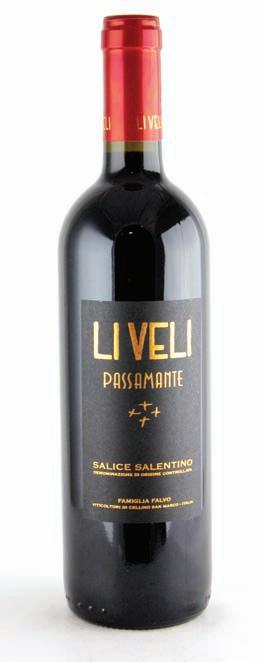
JOIE PINOT NOIR 2014 OKANAGAN $19-22 Ogopogo, Sasquash, the Loch Ness Monster, good Pinot Noir at a reasonable price, UFO’s, the Easter bunny. Like Don Quixote we all want to believe in something and some spend a lifetime chasing their dream! But perhaps its time we put paid to one of these old chestnuts. In the 21st century good Pinot Noir has been discovered growning throughout the Okanagan and the Cowichan Valleys. Joie Farm offers a lovely pinot at a more than fair price. Redolent with red cherry, spice and dusty earth flavours, a soft silky texture nicely balance with soft acidity and a blush of well-integrated tannins. This is a wine worth seeking out.
DOMAINE PAUL AUTARD COTES DU RHONE 2015 FRANCE $22-24
The 2015 vintage is inky black and concentrated with black cherry, vanilla, spice and violet aromas. The palate is rich and pure with powerful fruit flavours, a patina of soft tannin and a long supple finish.
At Slaters, we strive to provide top quality products and service 7 days a week. We specialize in local meats, sourcing them from all over the island and BC. We also carry a variety of all natural deli meats, cheeses, sausages and much more!
2577 Cadboro Bay Road, VICTORIA 592-0823

We’ve talked about the explosion of local distilleries of gin, vodka and even whisky, but one category that hasn’t been discussed is liqueurs. Okanagan Spirits have been creating local fruit liqueurs for years, but one new kid on the block that has been shaking things up is Sons of Vancouver.

If you haven’t heard about Sons of Vancouver, you can’t be blamed. A partnership between two sons of B.C.’s interior, James Lester and Richard Kraus, they class themselves as a really, really small-batch distillery located on the North Shore. As this writer can attest, it is one of the smallest distilleries in B.C., if not Canada. Their specialty is the No. 82 Amaretto, a locally sourced ingredient liqueur inspired by their mothers’ canning recipes and a 16th-century Italian love story about a Renaissance artist and his beautiful muse. Apricot kernels, vanilla beans and orange peels, along with B.C. blackberry honey, make up an amaretto like no other.
Tim Siebert over at Northern Quarter is leading the way in his small, six-seat bar on Douglas Street when it comes to showcasing the local spirits boom. The one-man bar tucked into the back of the 80-seat live music restaurant has one of the largest and most impressive local spirit selections in the city. Siebert’s dedication to local spirits shows in his cocktail menu, utilizing predominantly local spirits in a way that’s both elevated and approachable to the guests who cram into the space for everything from date nights to Benji’s famous trivia quizzes.

The La Rhumba is one cocktail that grabs your attention straight away, something of an Amaretto Sour variation that could be investigated or cast aside. Investigating is the best option in this case. Listed as a combination of Sons of Vancouver No. 82 Amaretto, lime juice and grapefruit bitters, the simplicity is appealing. But once the cocktail is made and slid in front of you, the real complexity of the drink shines. Served on the rocks with a cinnamon sugar rim, the nose is refreshing and citrusy. Take a taste and the cinnamon sugar starts to dance with the amaretto, giving it a complexity as if brandy or rum were present in the drink.
“B.C. distilleries have done a great job utilizing all the amazing fruits and botanicals that grow here,” says Siebert. “B.C. spirits taste quite different to the global brands we are used to, allowing us bartenders to create something unique to this corner of the world. They are changing the way we drink by broadening our expectations of what certain spirits can taste like.”
When it comes to using the Sons of Vancouver Amaretto, Siebert mentions “its beautiful depth of flavour, more rounded sweetness than the amarettos we are used to. The balance of apricot, almond and vanilla flavours with the honey sweetness is what really sets it apart.” When mixed in the simplicity of the La Rhumba, it complements and contrasts the flavours of the amaretto in a beautifully balanced drink.
LA
2 oz SOV Amaretto
1 oz lime juice
2-3 dashes grapefruit bitters (Fee Brothers)
Cinnamon sugar rim
• Shake, strain, top with fresh ice.
• Garnish with a dehydrated (or fresh cut) orange wheel.
Hudson’s On First
Award winning dining in a beautifully restored heritage home. Local ingredients, classic techniques and made from scratch cooking are a just few reasons to visit us in Duncan more often. Celebrate Bubbles & Brunch, Lunch and Dinner.

163 First St. Duncan, BC, 250-597-0066, hudsonsonfirst.ca
Duncan Garage Café & Bakery
Cooking up real food 7 days a week. Just the place for Christmas eating. Healthy beverages, vegetarian, vegan and gluten-free specialties.. Start your new year the right way… with us. Committed to serving local,organic and healthy vegetarian food and baking for over 15 years.
330 Duncan St., Downtown Duncan (across from the railway station), 250-748-6223

Henri Procter Realtor
New kitchen, new home? Henri is an award winning Realtor, serving Saltspring for 30 years. Positive, friendly and professional, Henri will excel in finding your perfect match.
Henri Procter, MacDonald Realty, 250.537.1201, henriprocter@gmail.com
Whisk
Happy New Year from Whisk! Come and visit us at the Victoria Public Market for the same great service and brands such as Fiestaware, Epicurean and Le Creuset. Gift registry
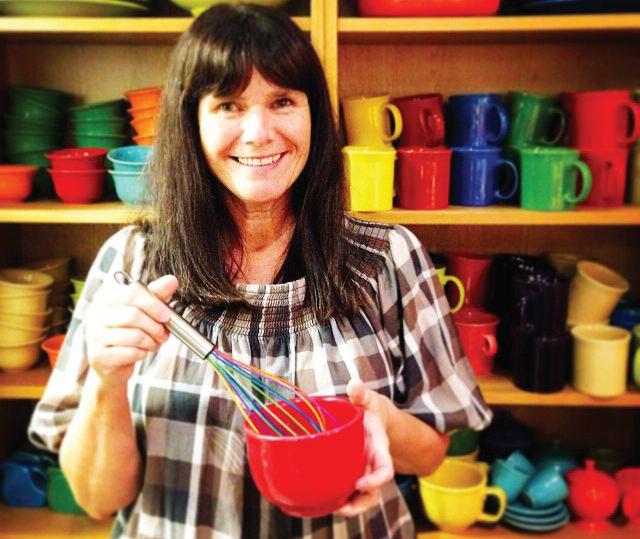
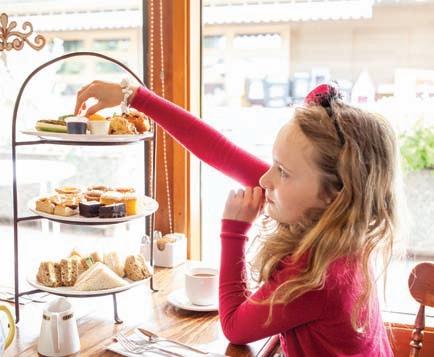
At the Victoria Public Market, 778-433-9184, whiskvictoria.ca, Facebook and Instagram. Open 7 days a week
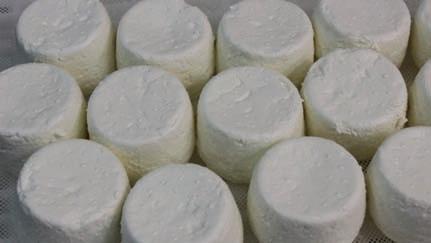
Adrienne’s Restaurant & Tea Garden
High Tea - Come and visit our Bakery, Deli and Restaurant for Breakfast, Lunch and Afternoon High Tea, we also offer Afternoon Tea plate and Kid’s Tea plate! A percentage of our Afternoon Tea sales is donated to Heart and Stroke Foundation in February and Cancer Care in March. Join us for High Tea and other goodies. Happy and Healthy New Year! Open daily! 5325 Cordova Bay Road, Victoria, BC, 250-658-1535, AdriennesTeaGarden.com
The Local General Store
Come visit our warm, old-world 21st century general store to find unique locally-made and fair trade gifts for all celebrations. A one-stop sustainable source of seasonal organic produce, as well as household goods, stationery, toys, body care, and refillable cleaning products.
1440 Haultain St, (Corner of Haultain & Belmont) (778) 265-6225, thelocalgeneralstore.ca
